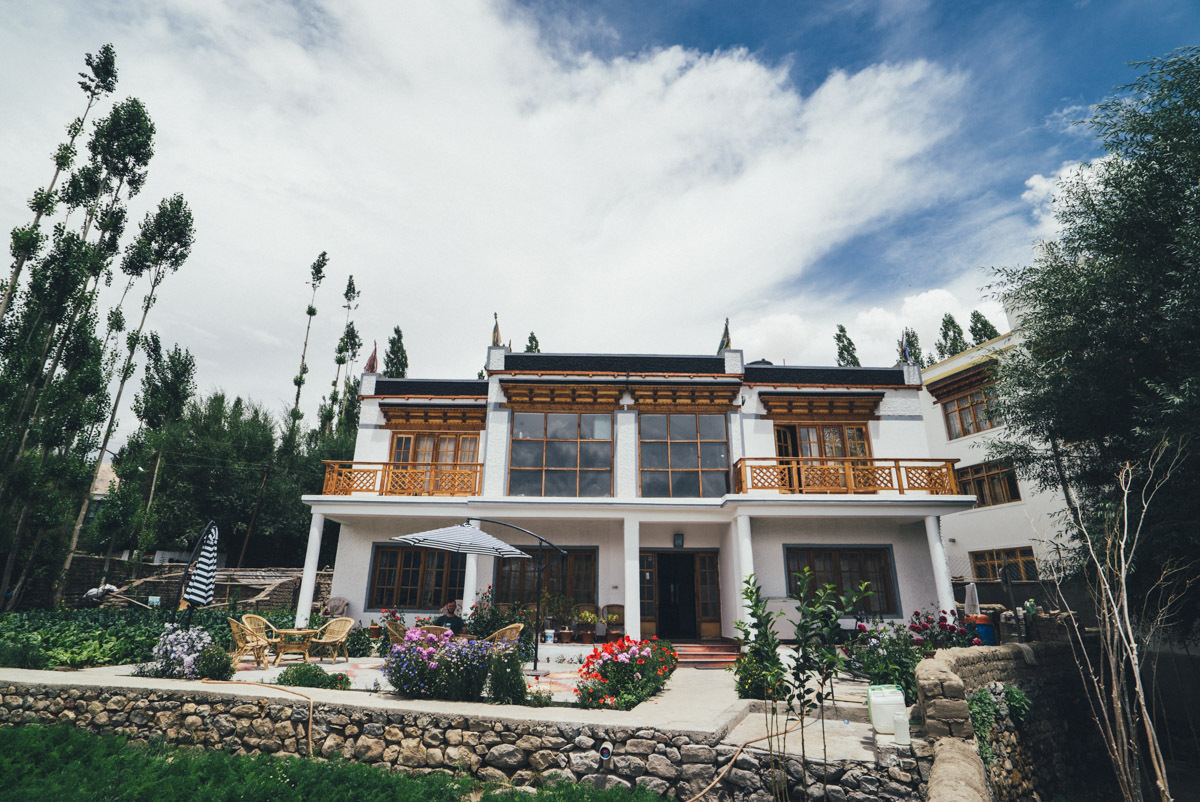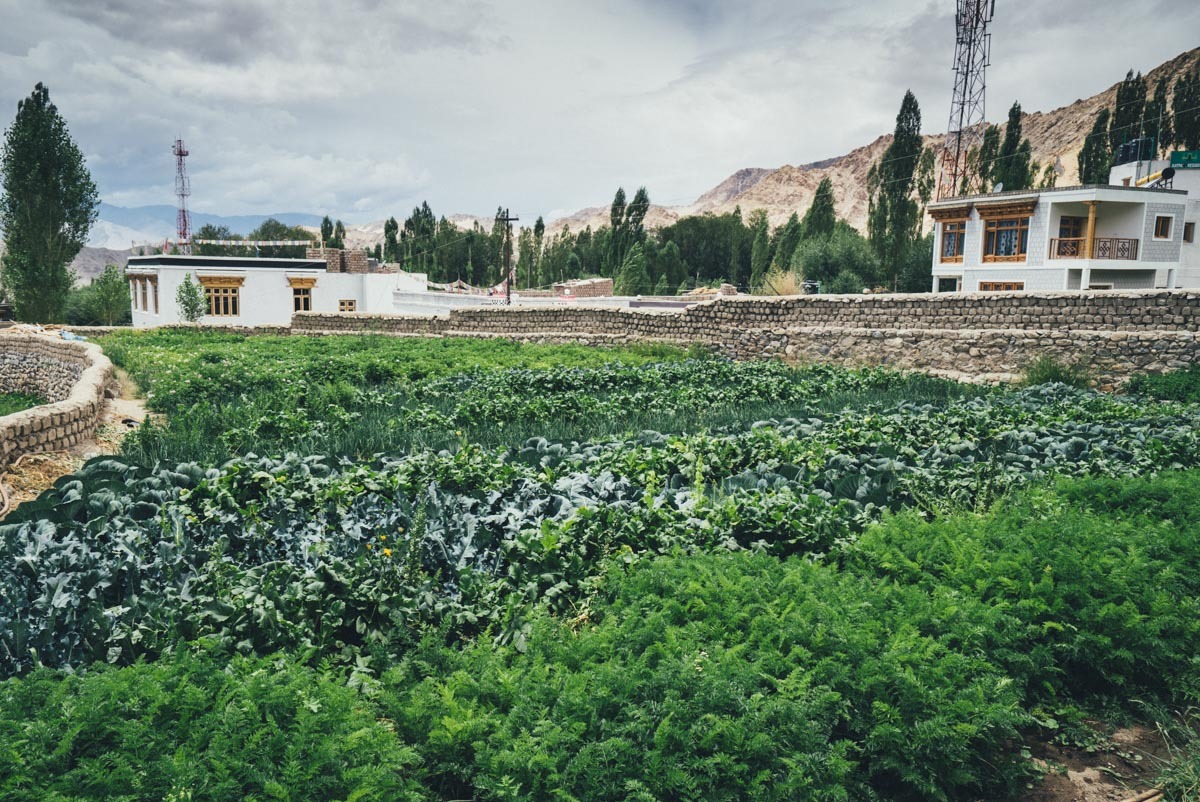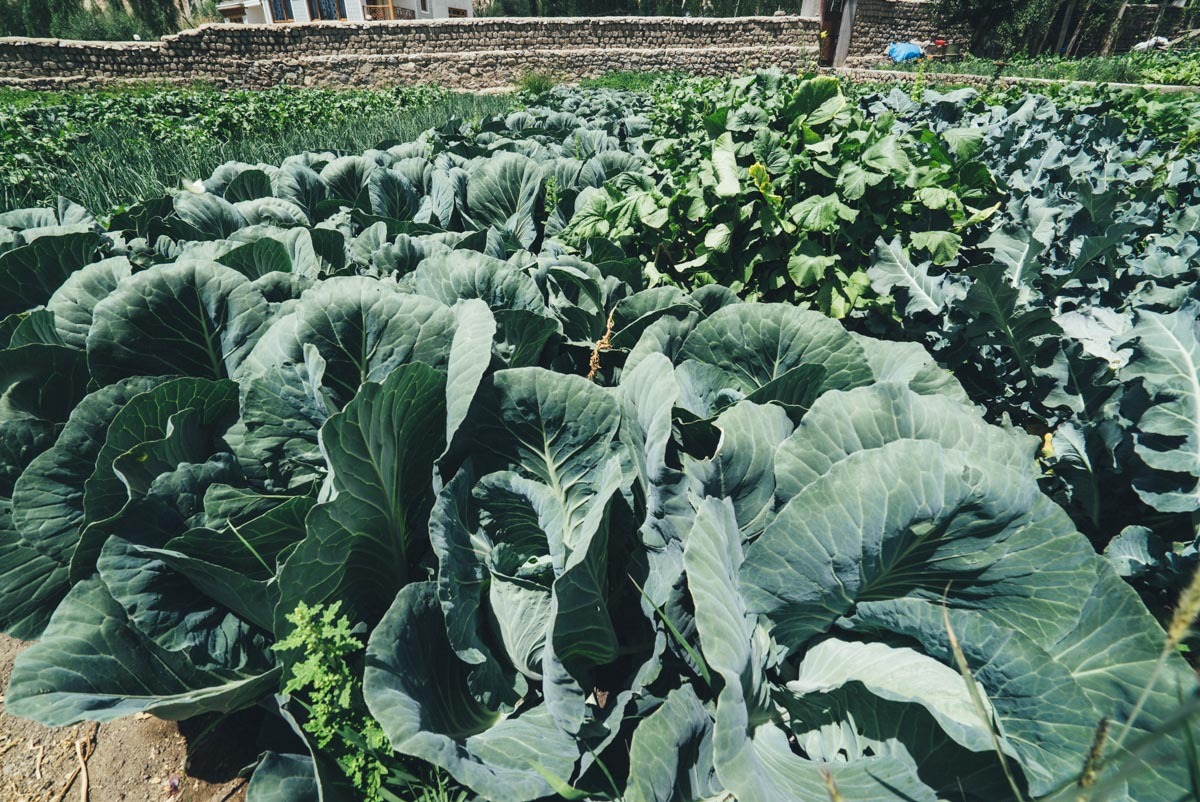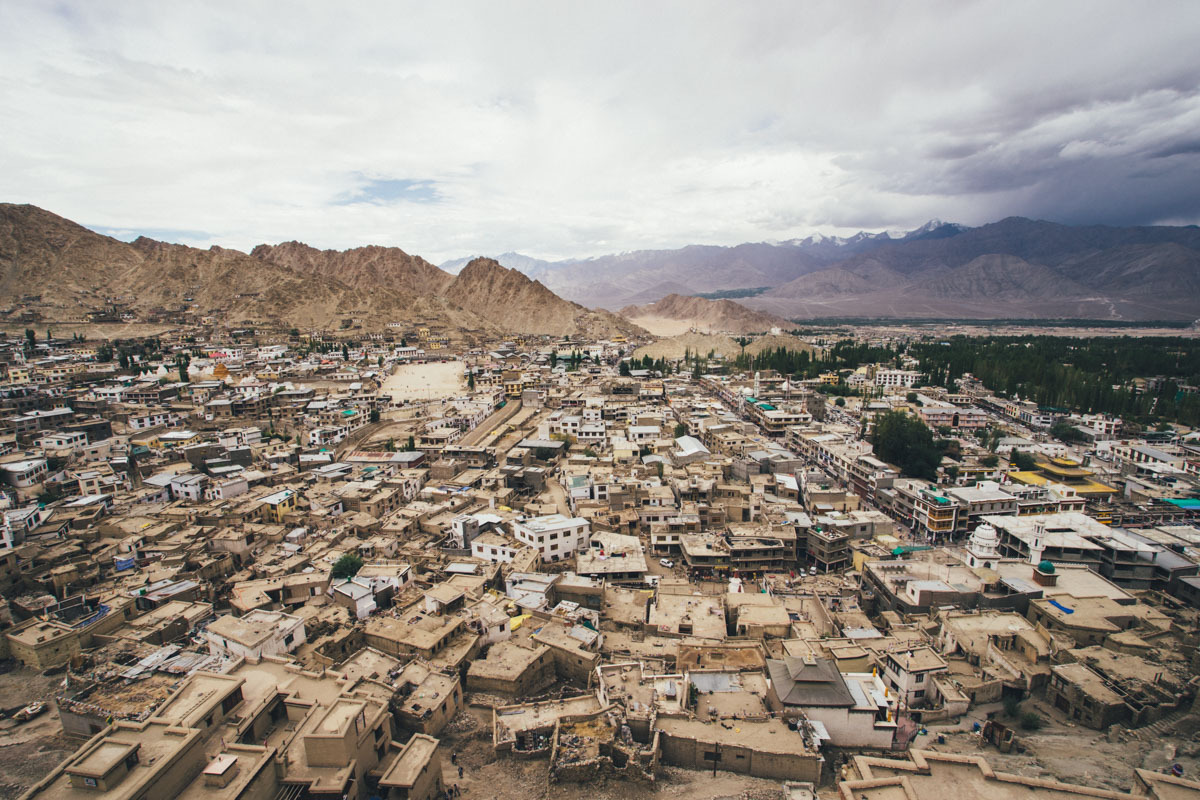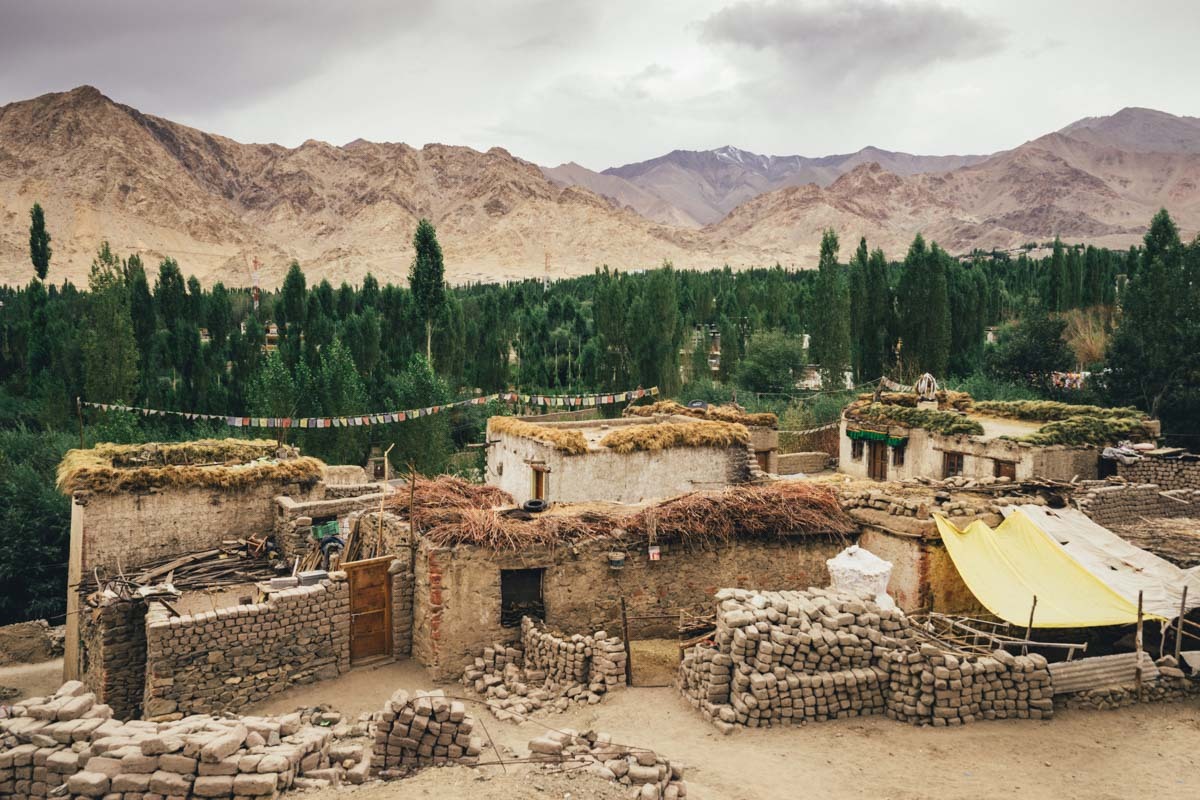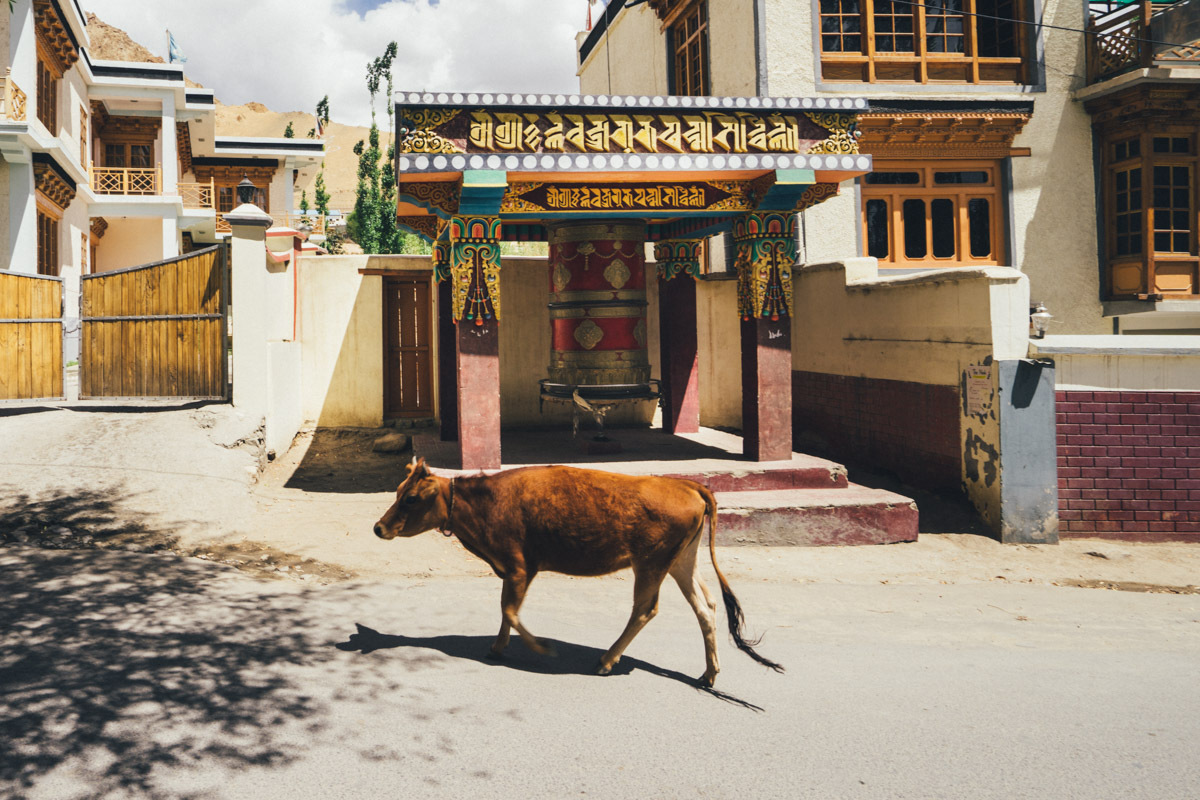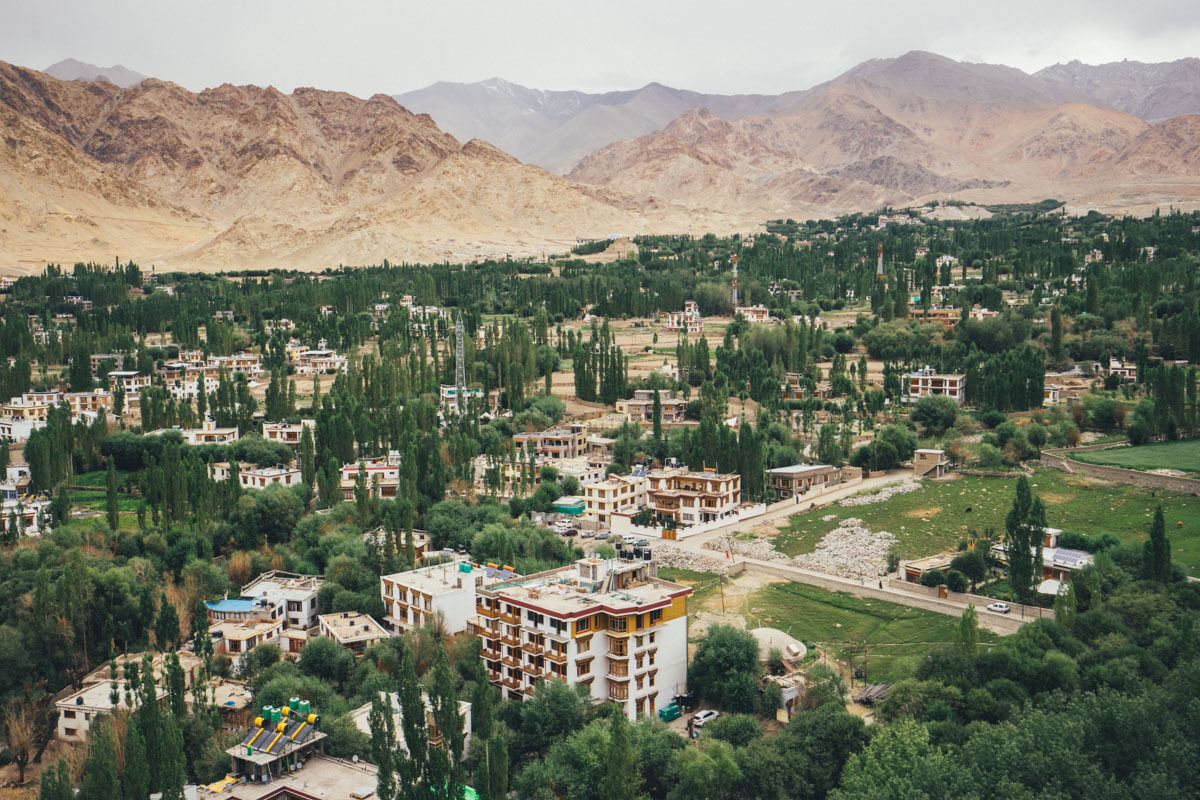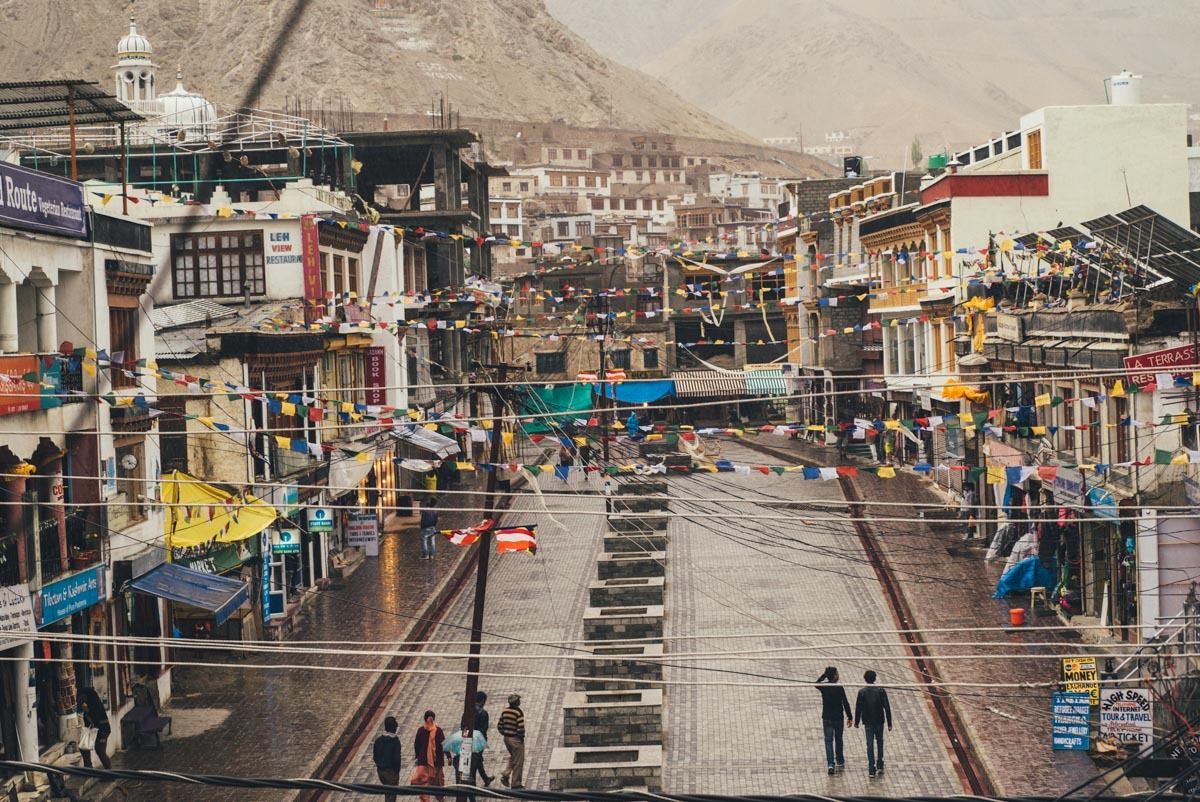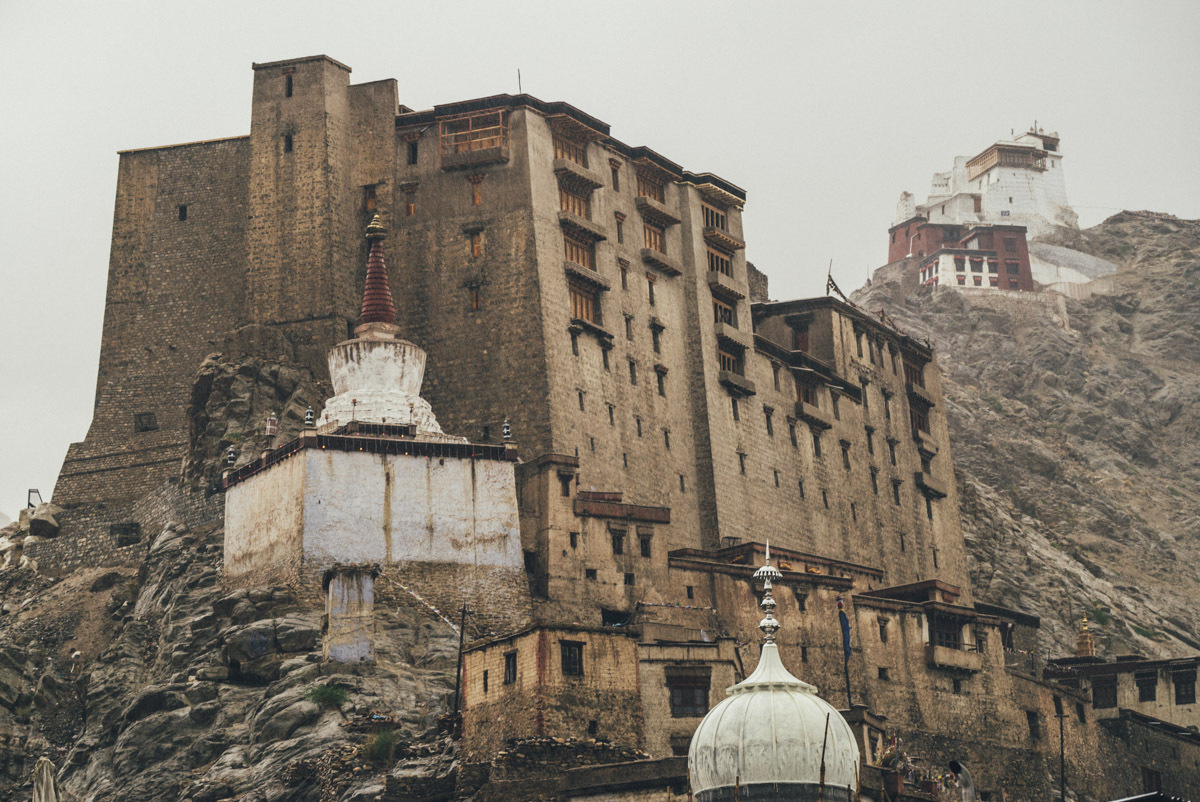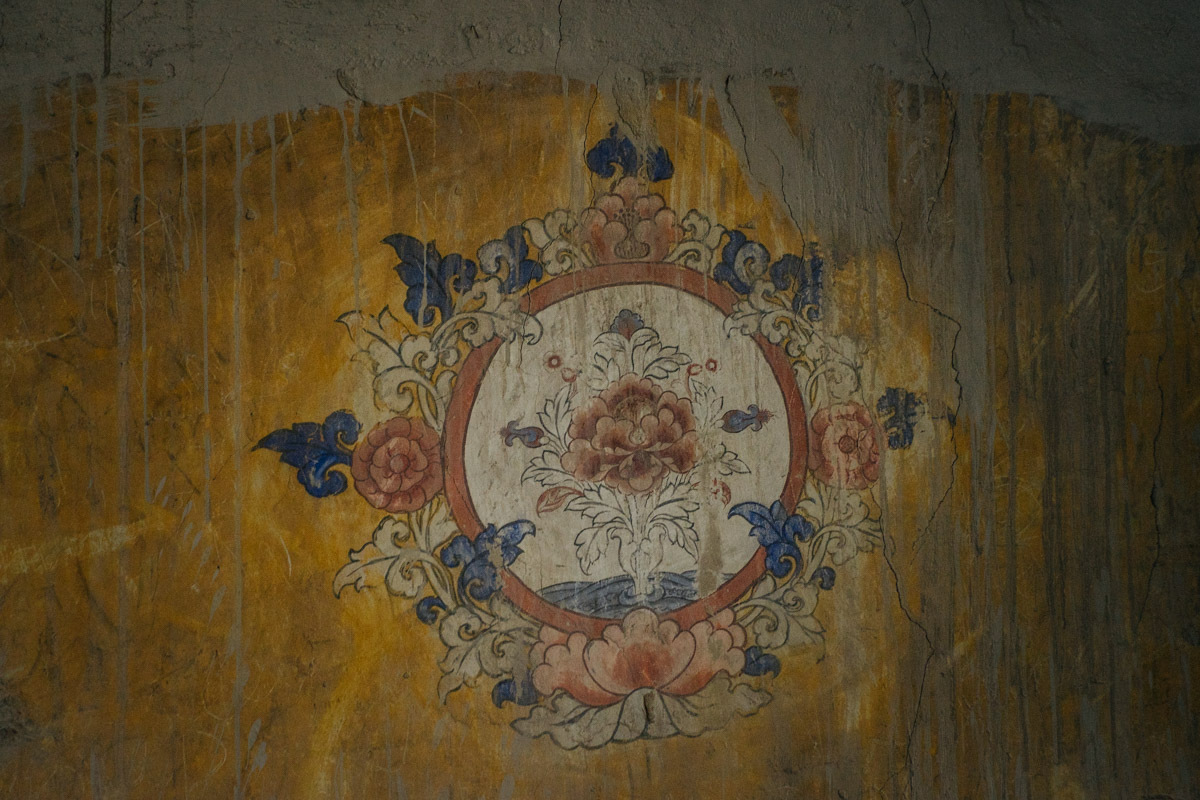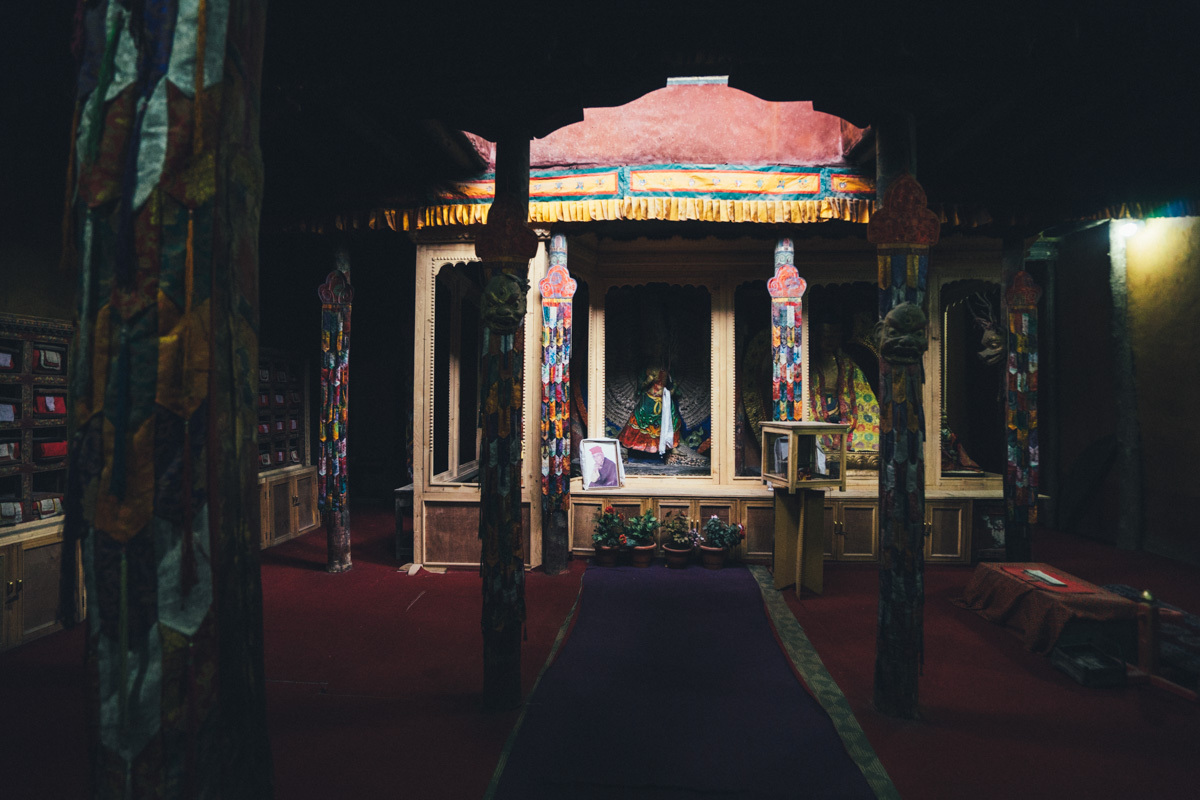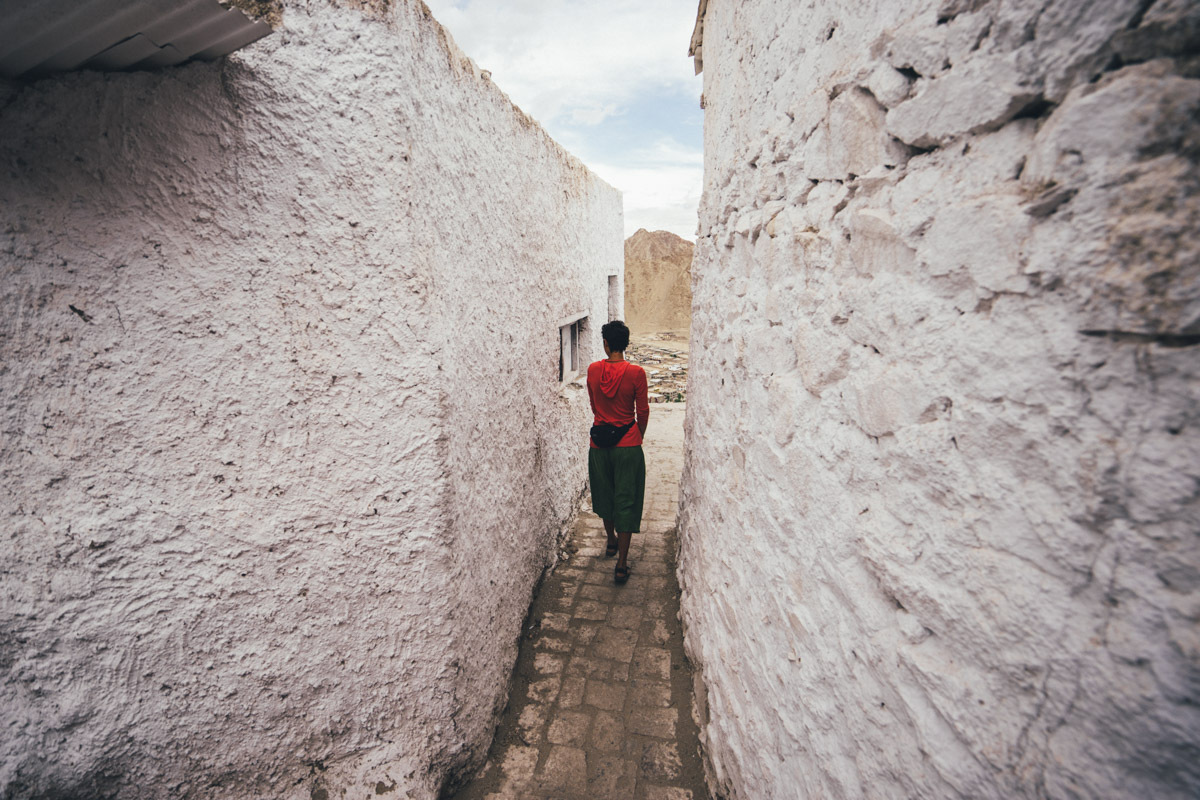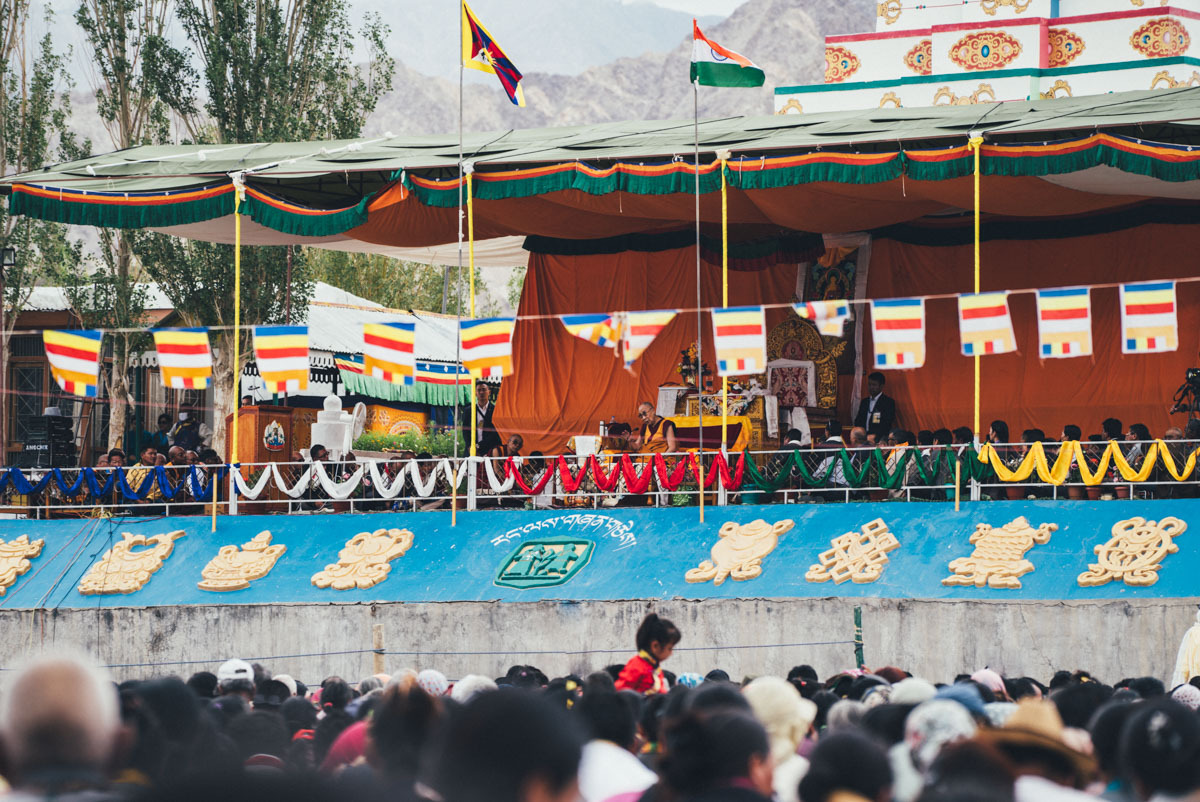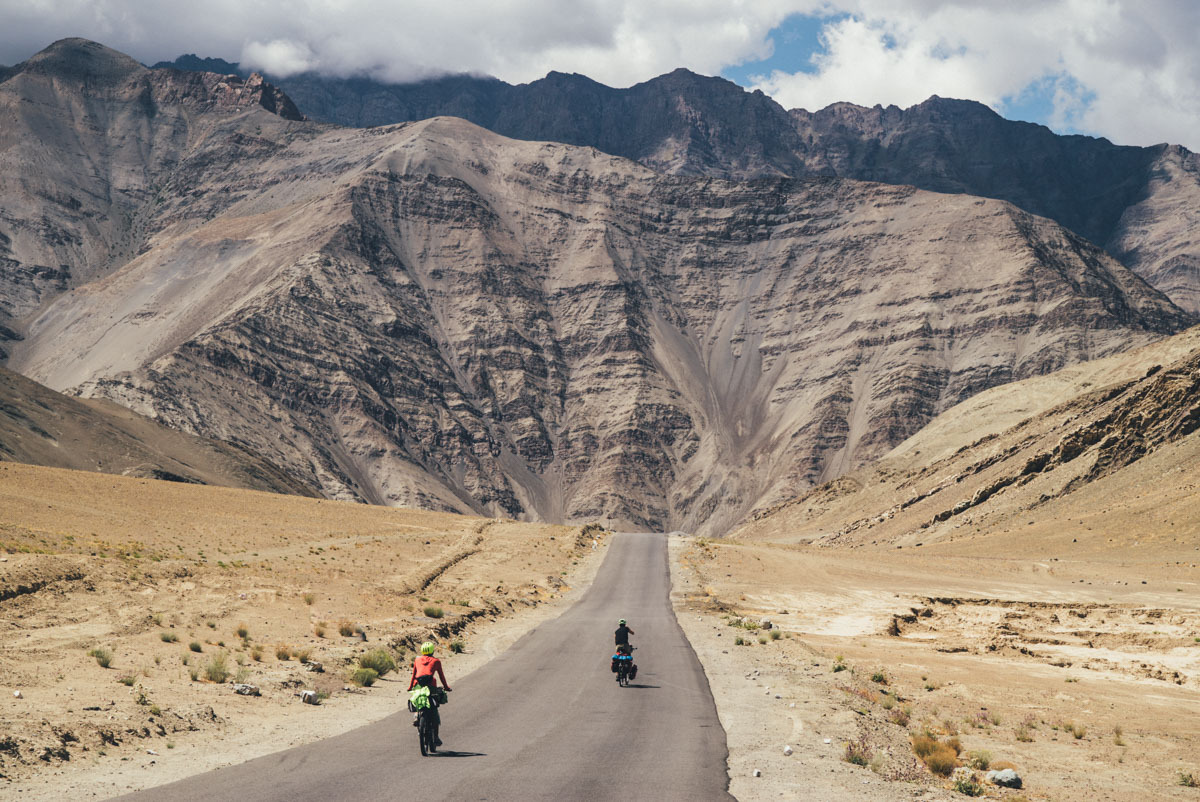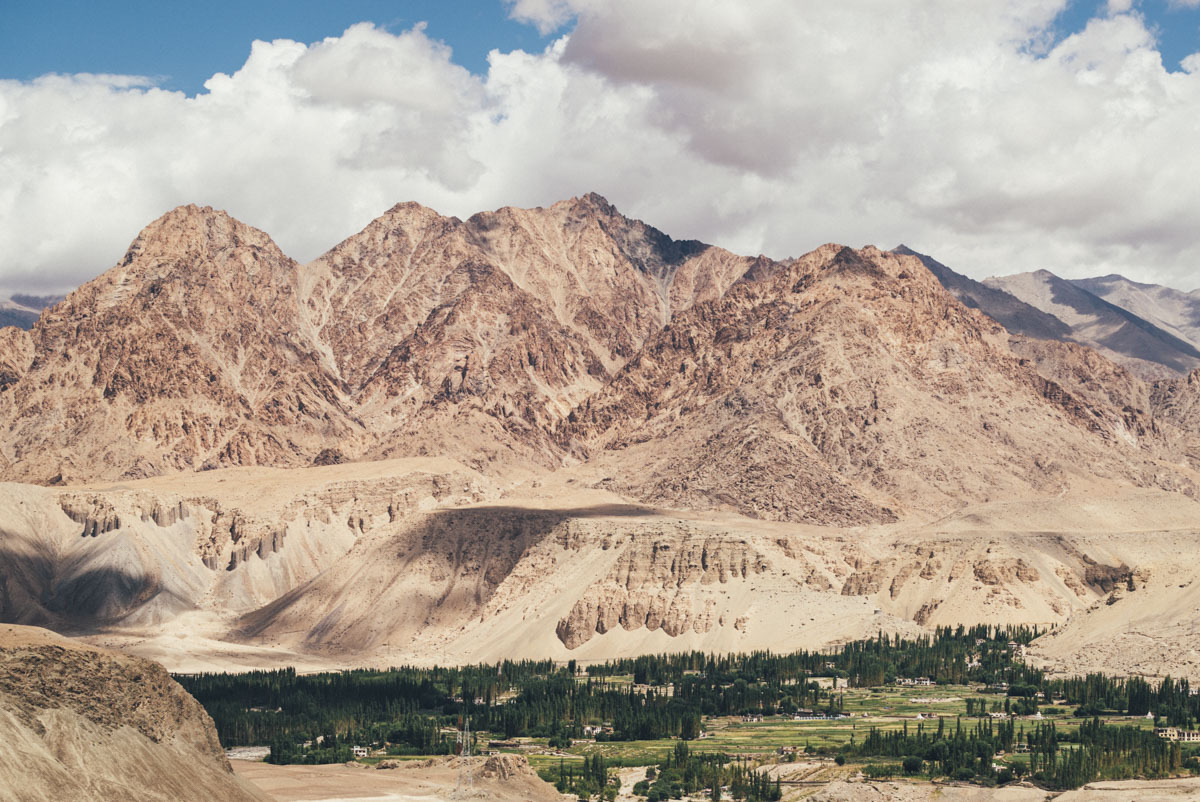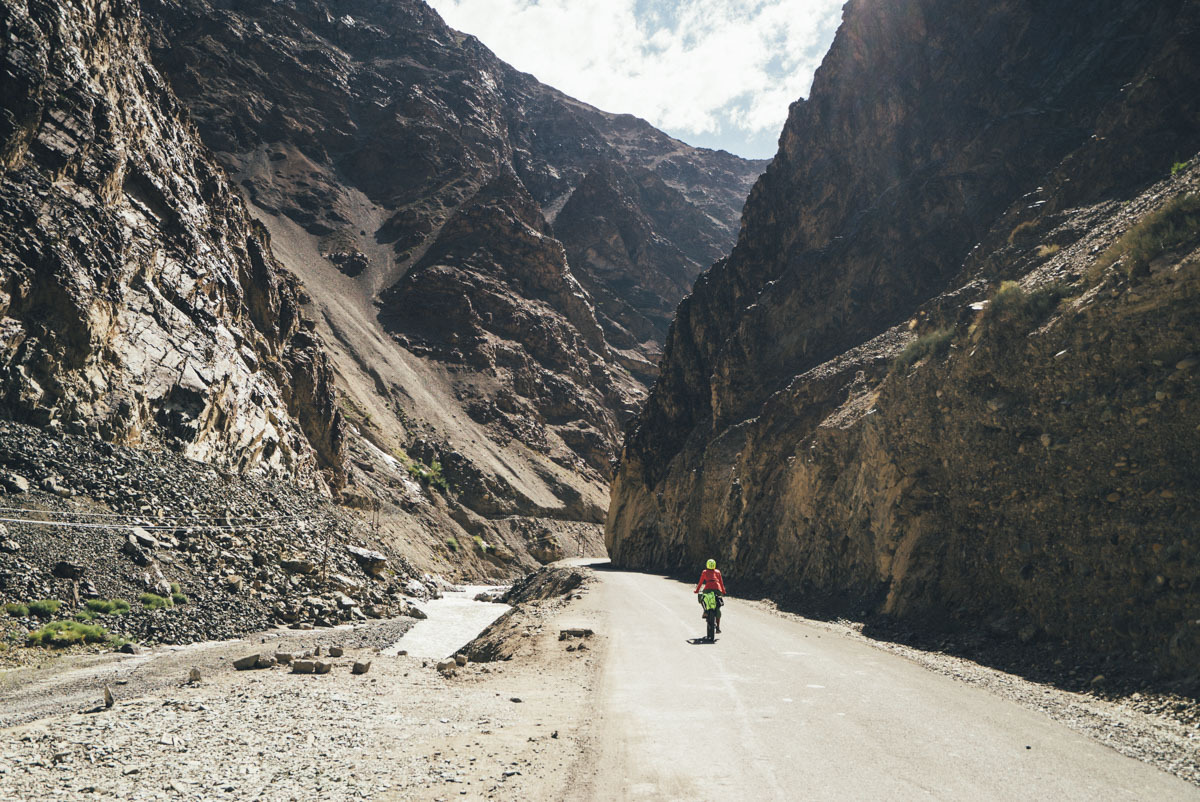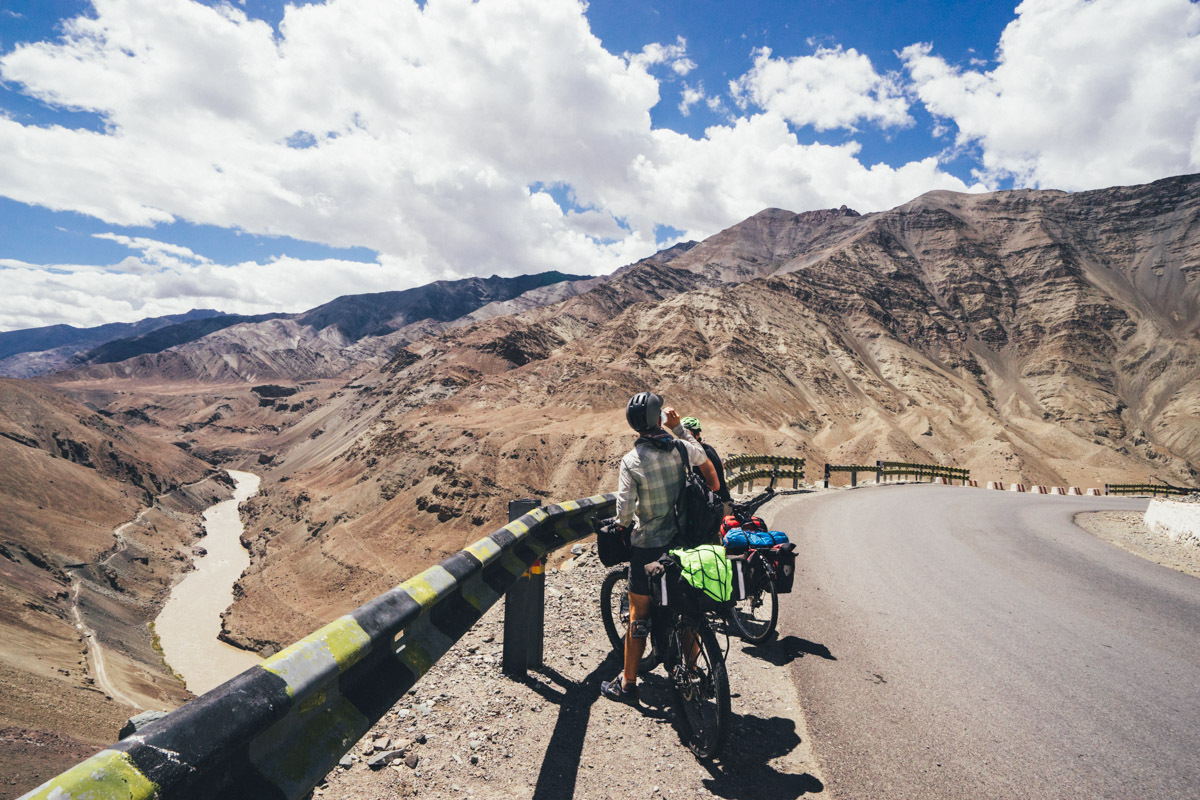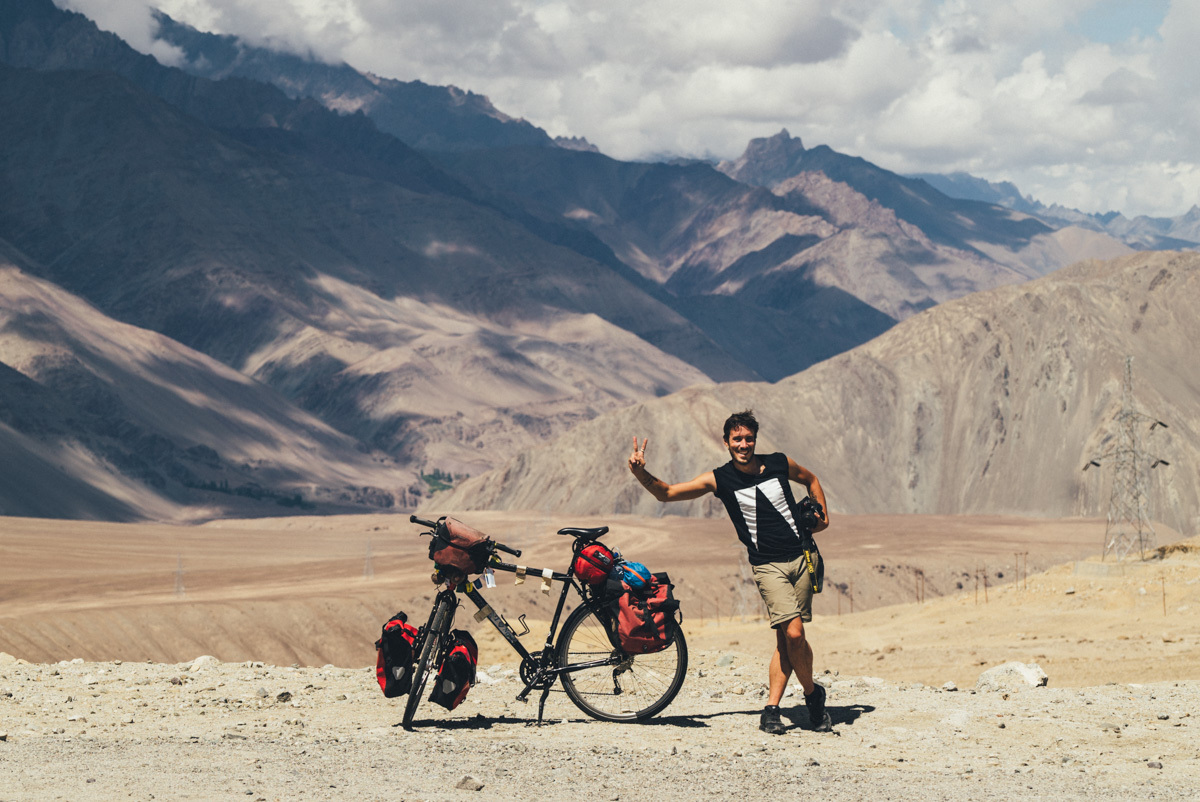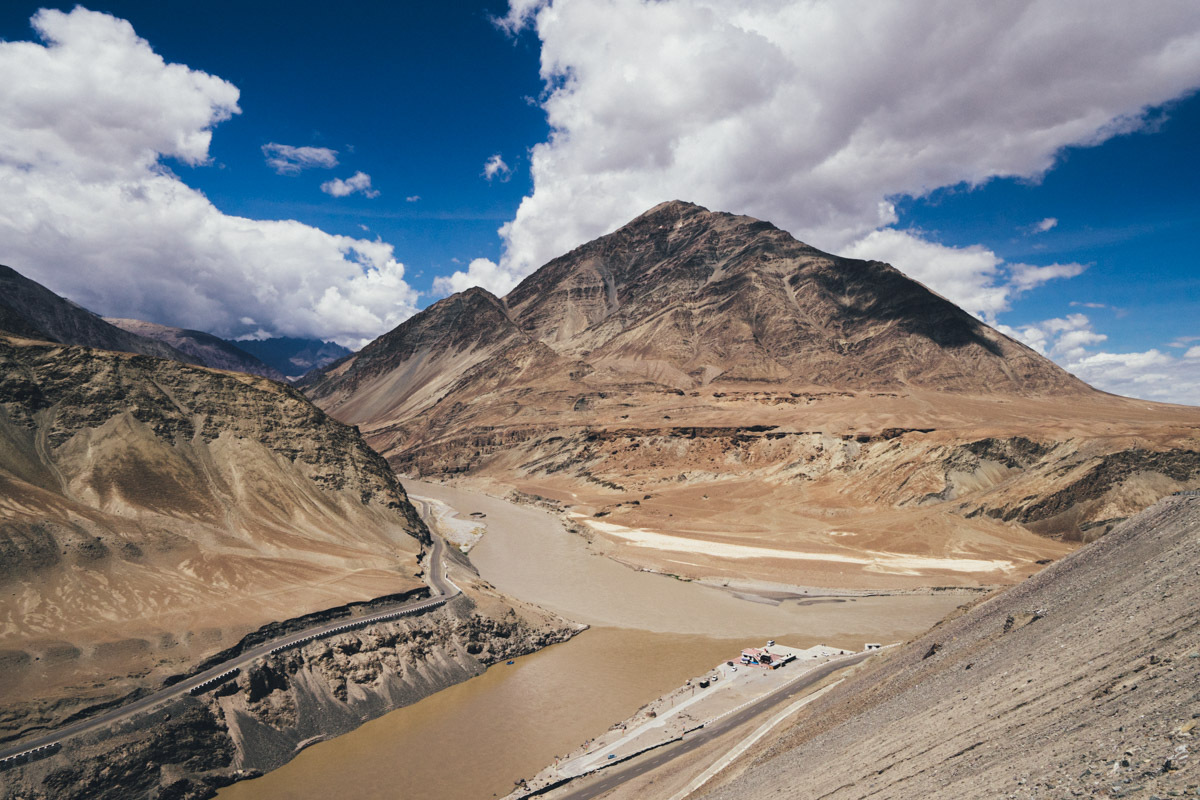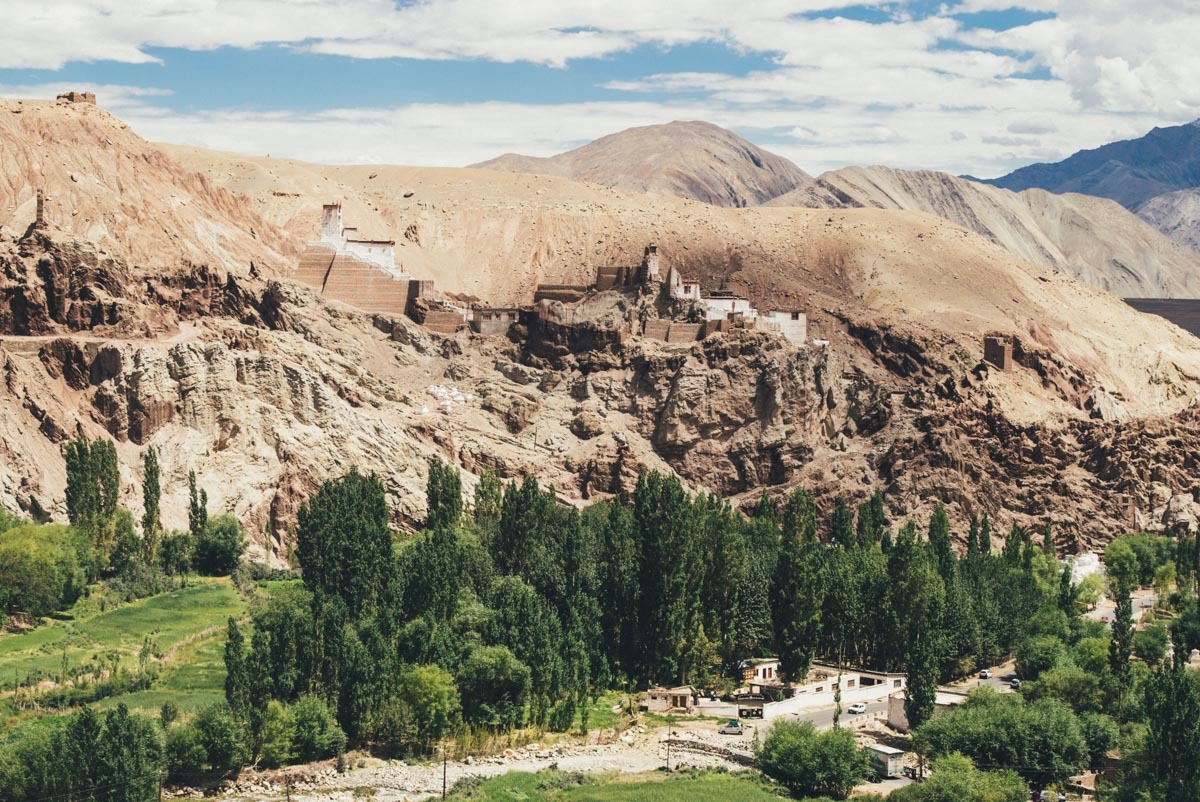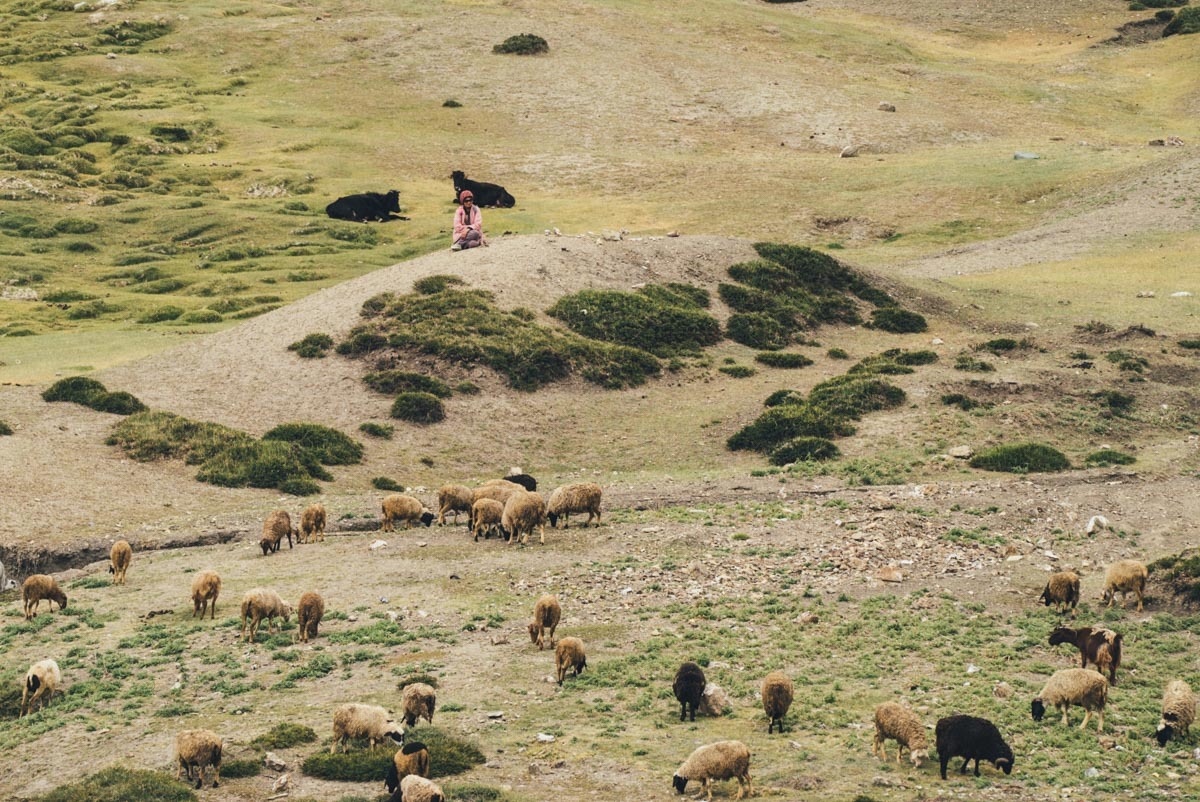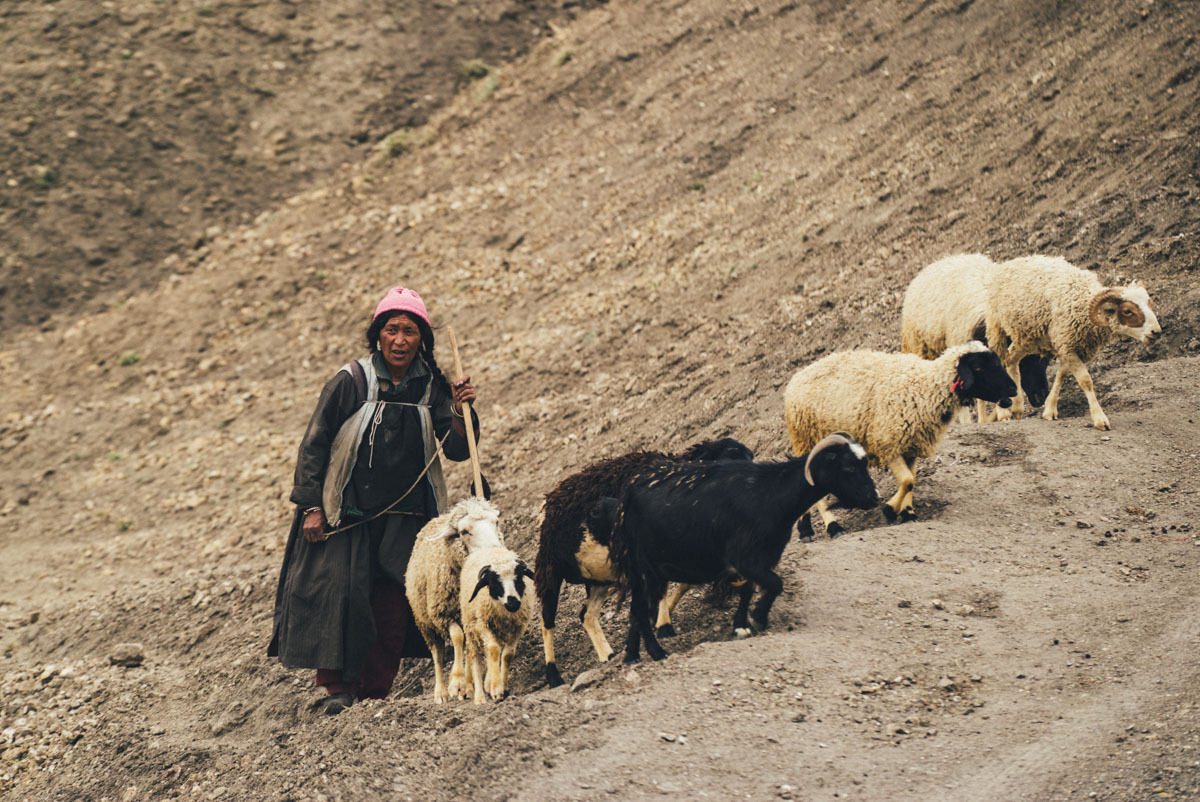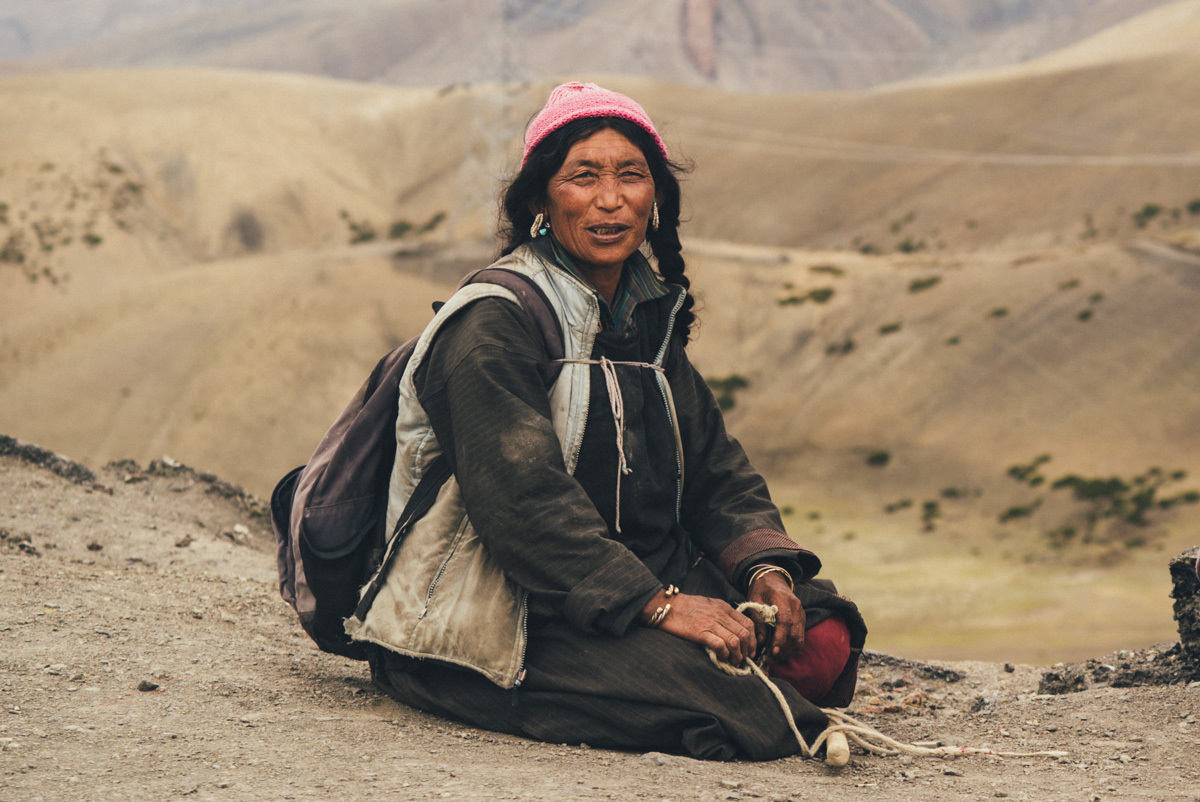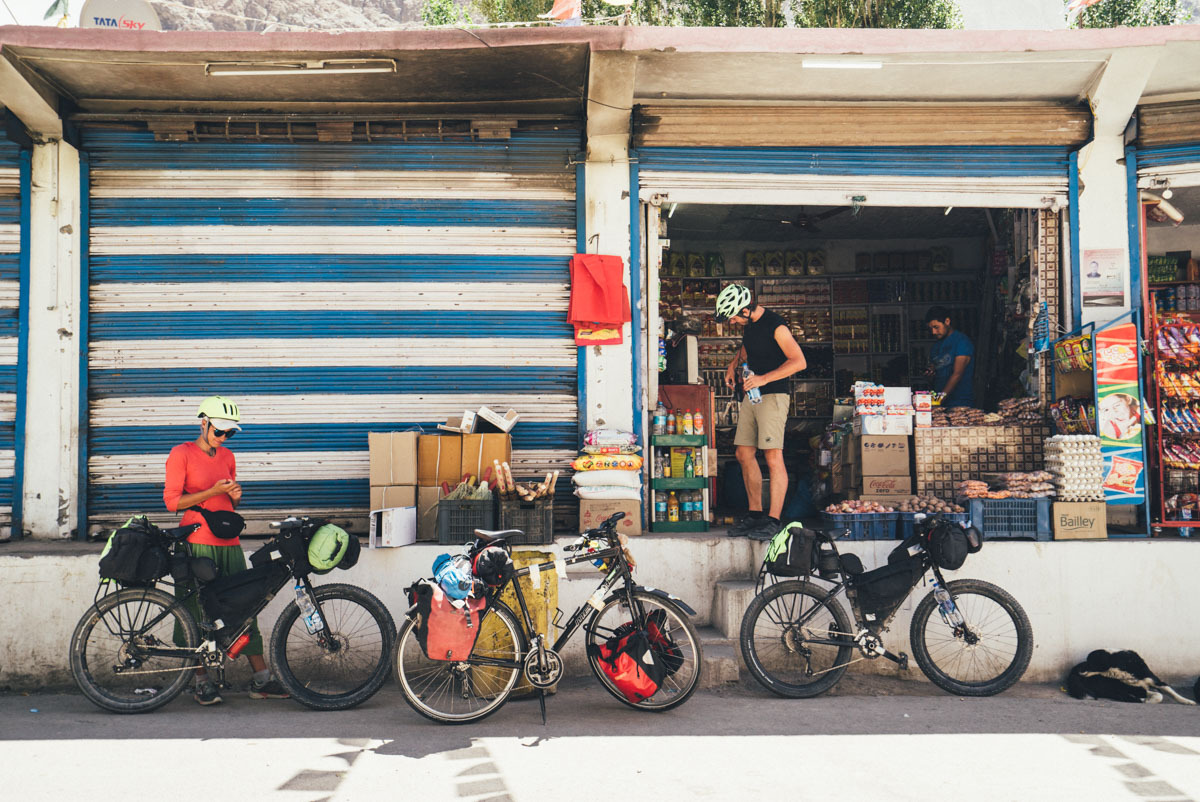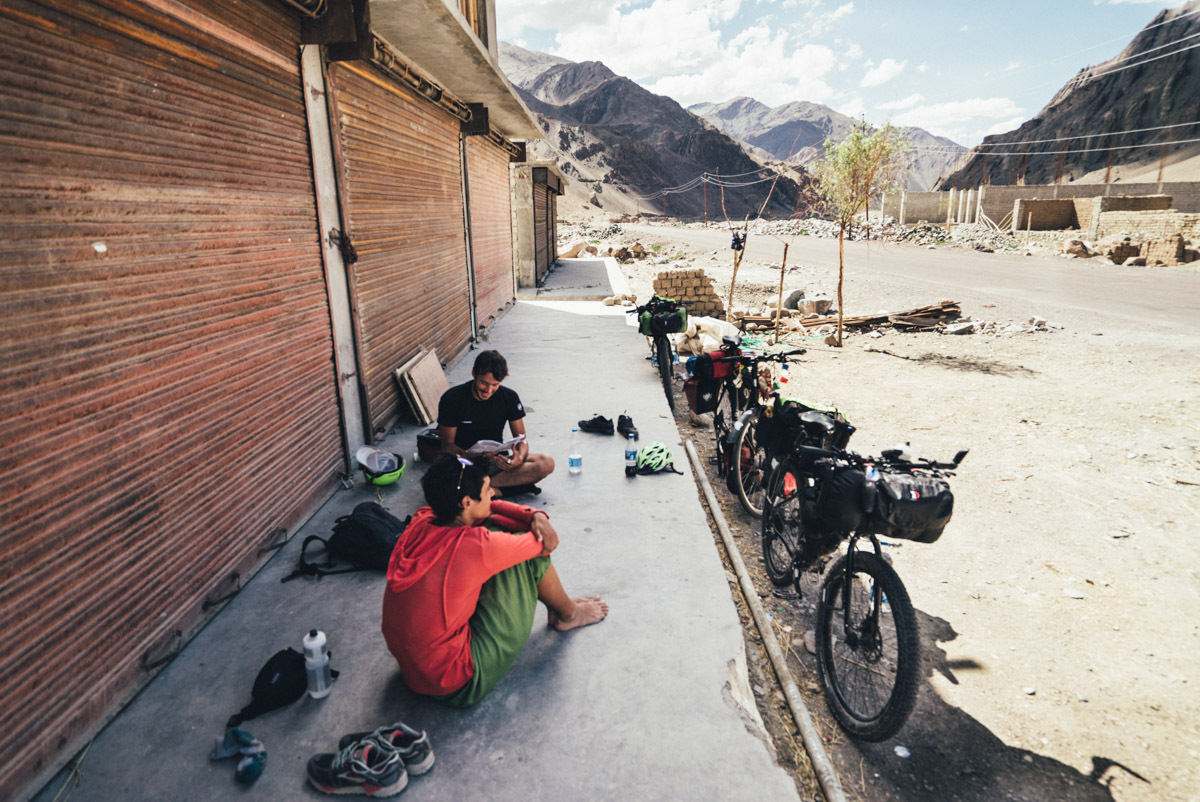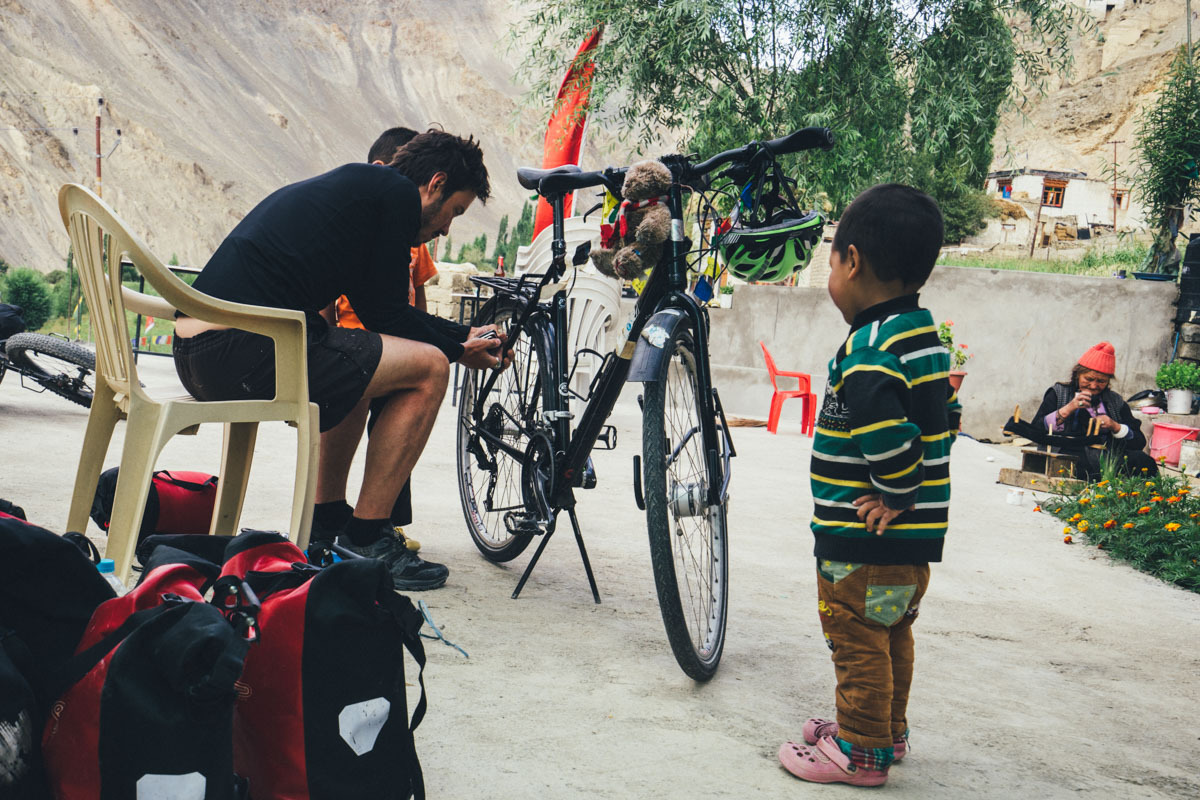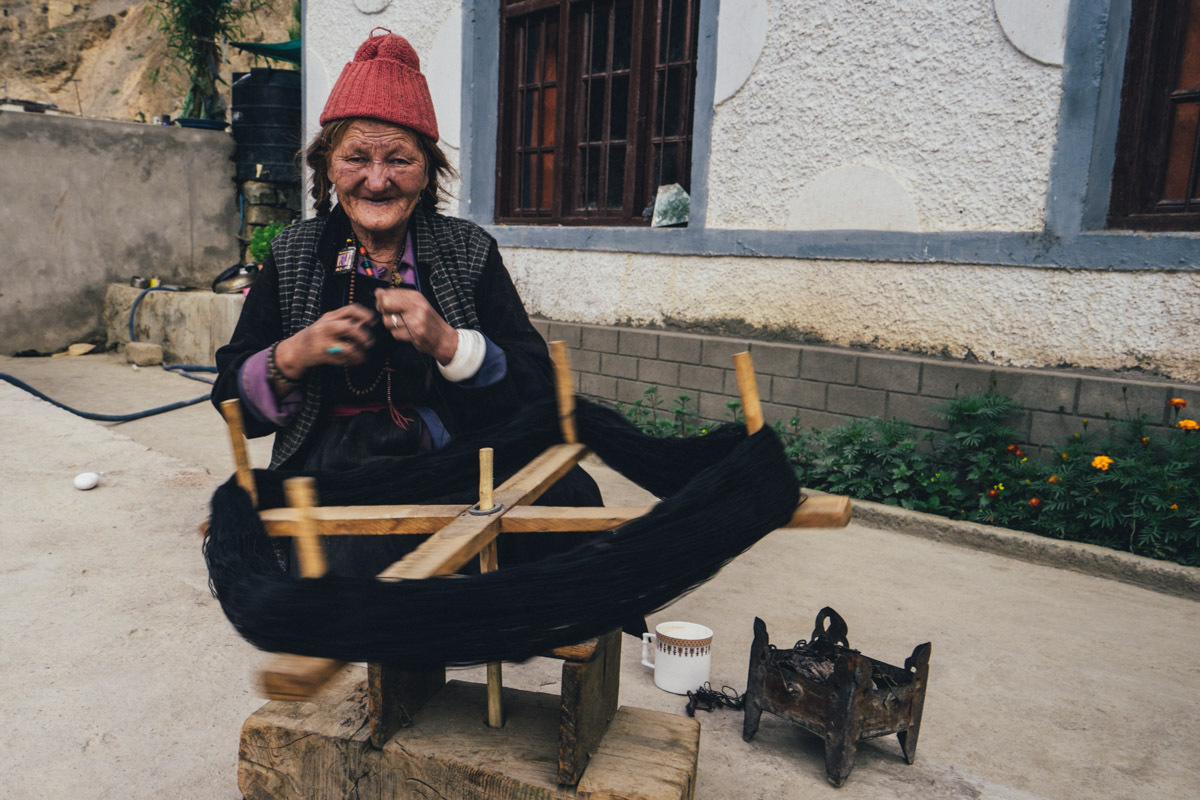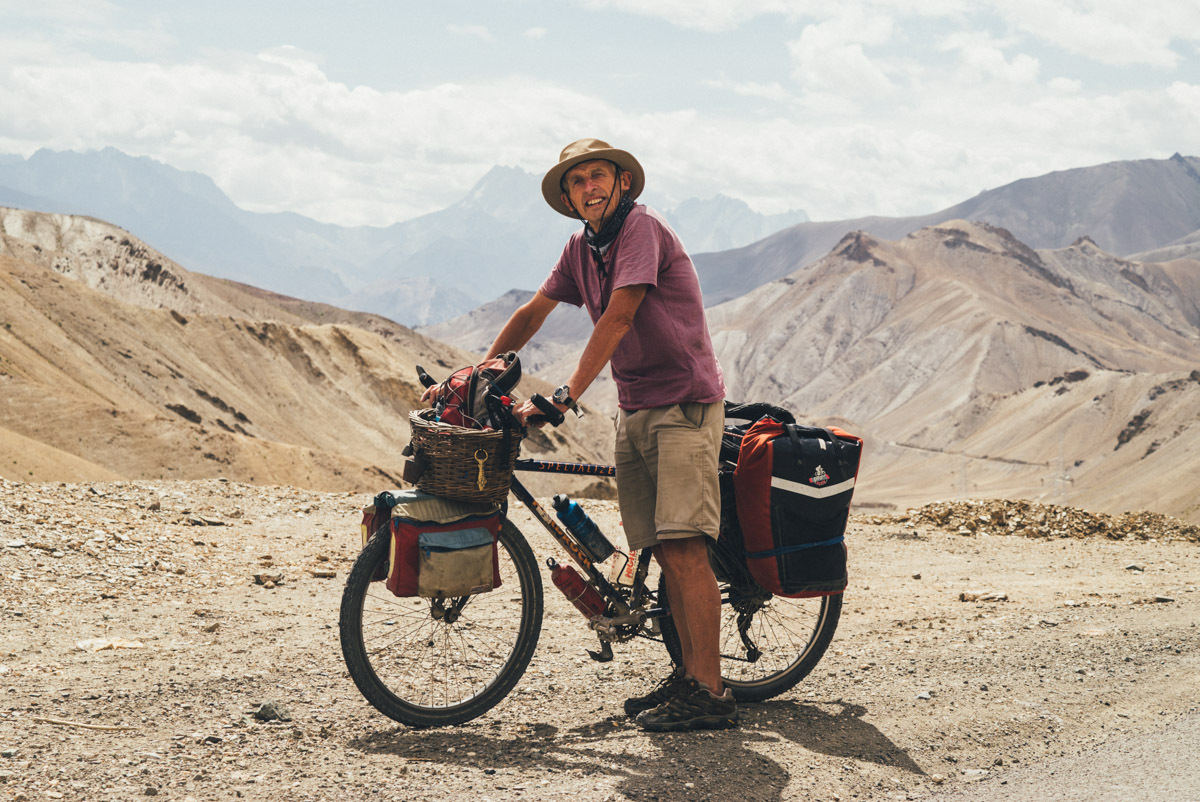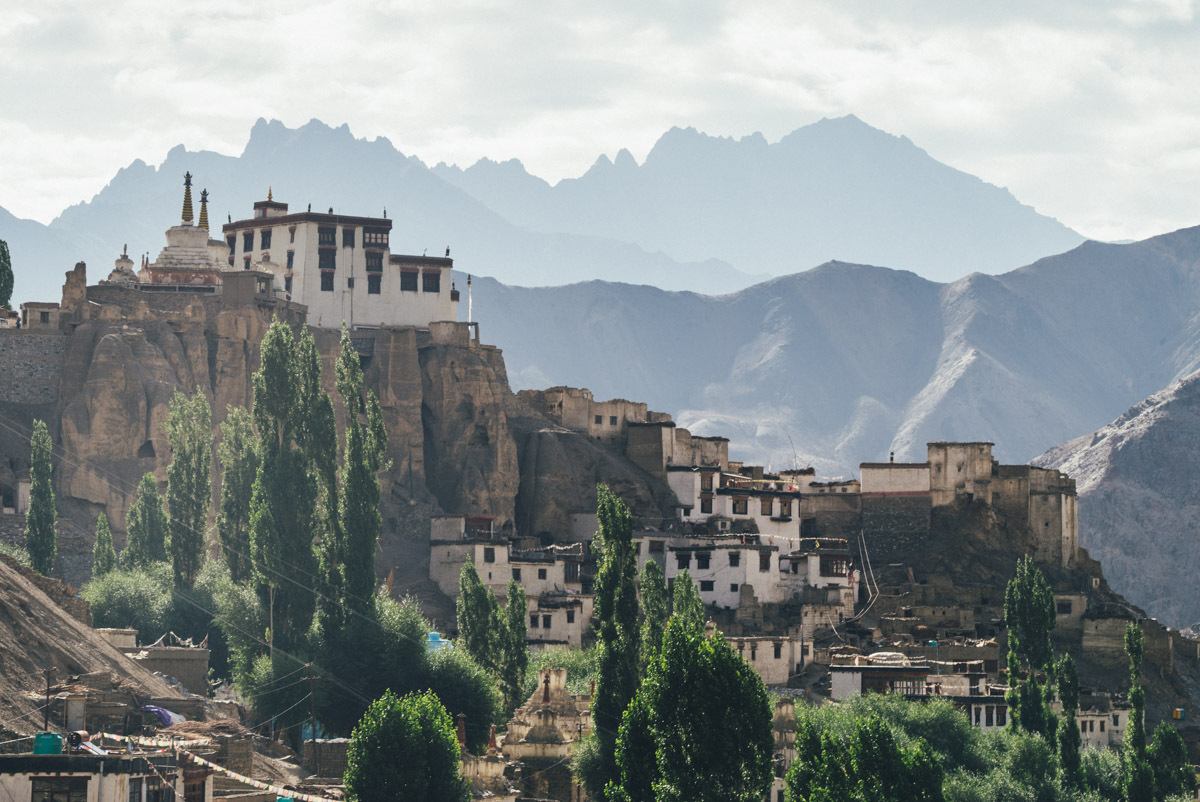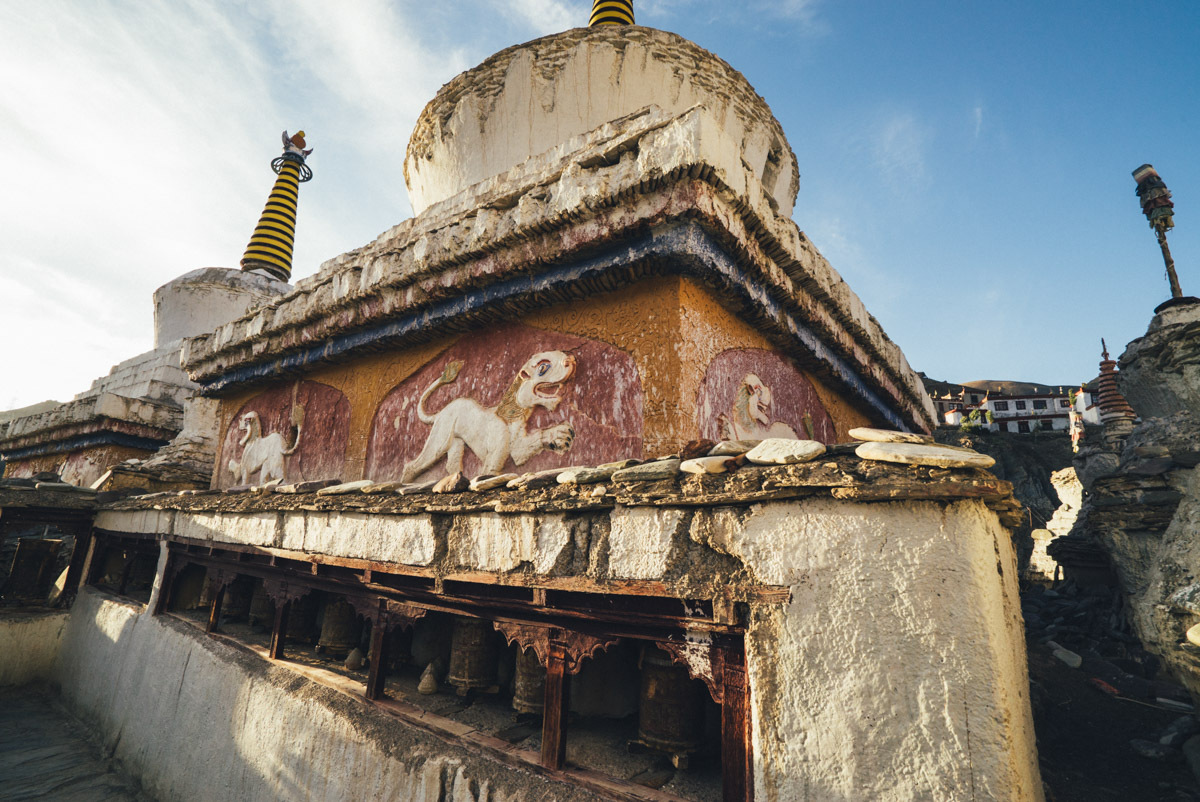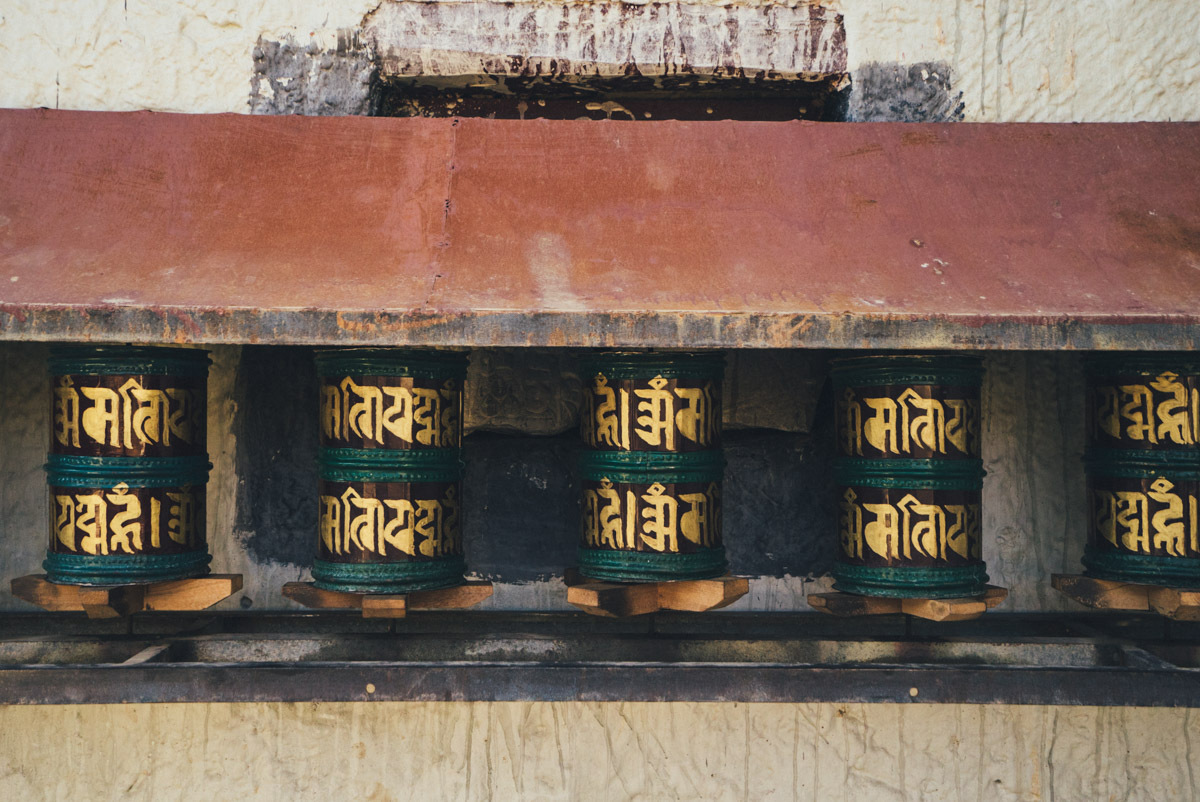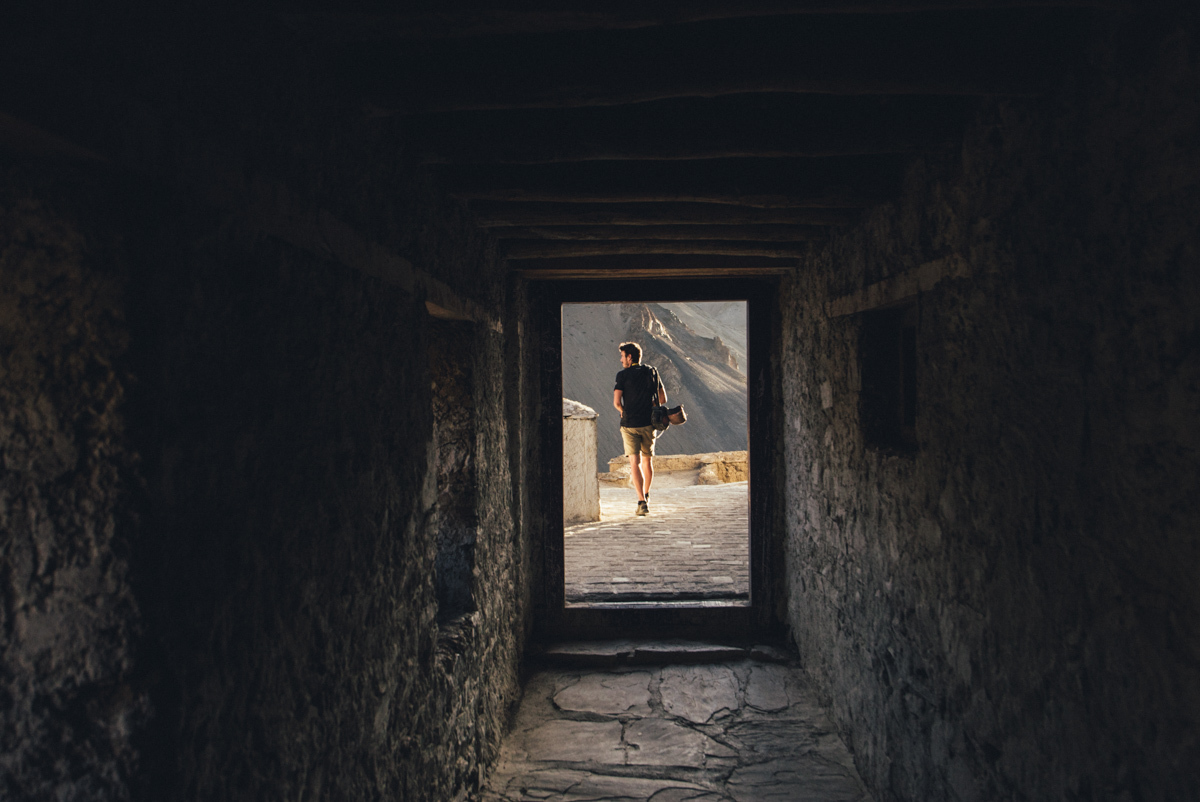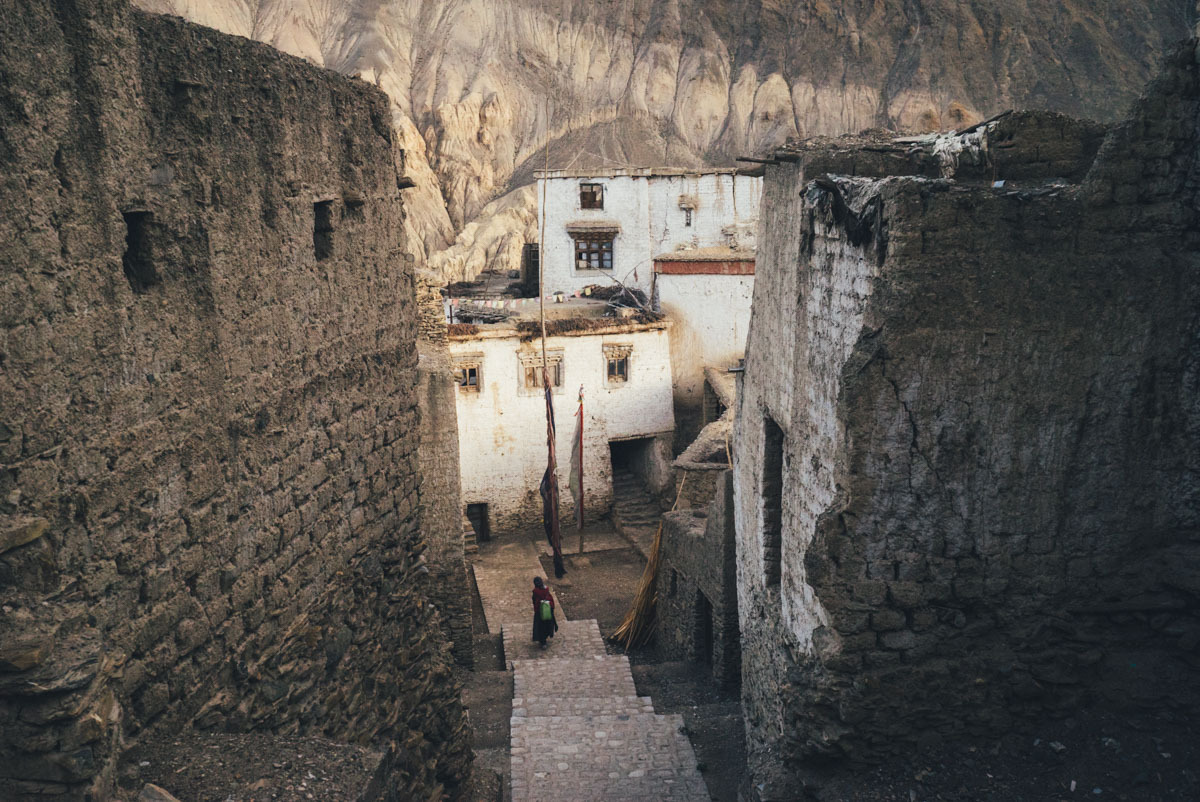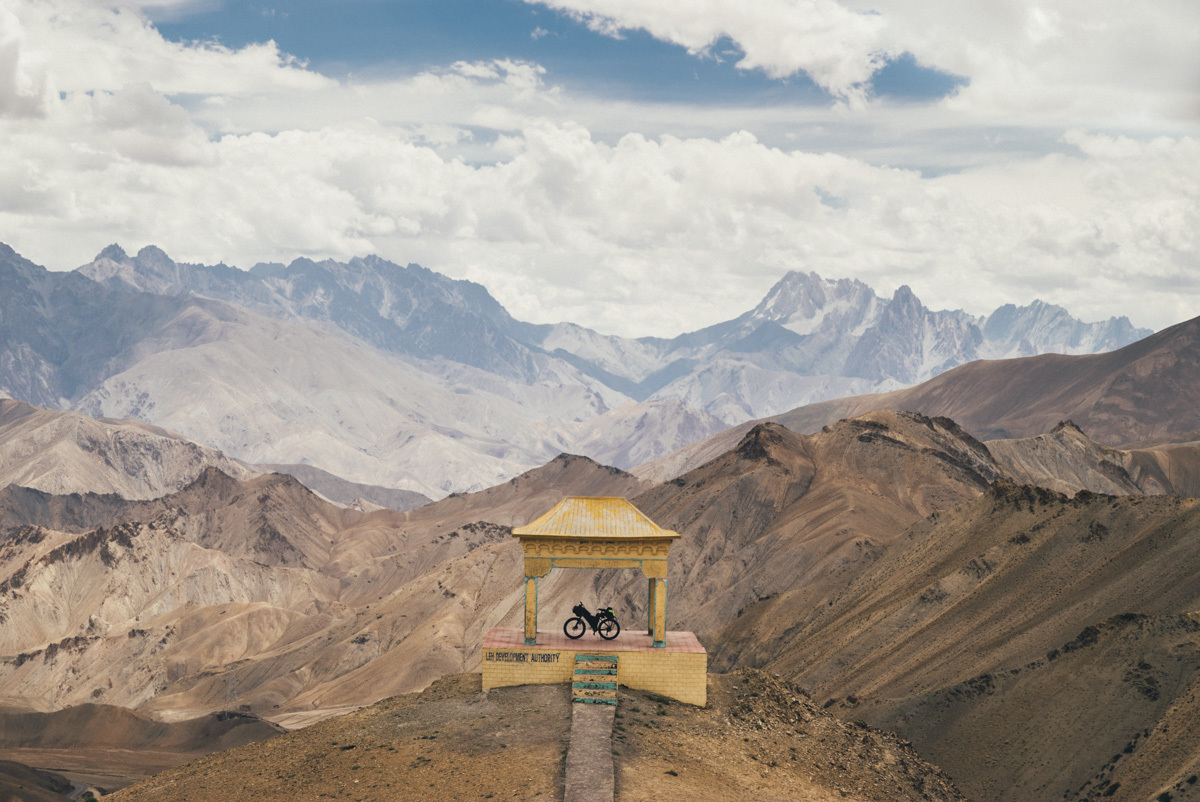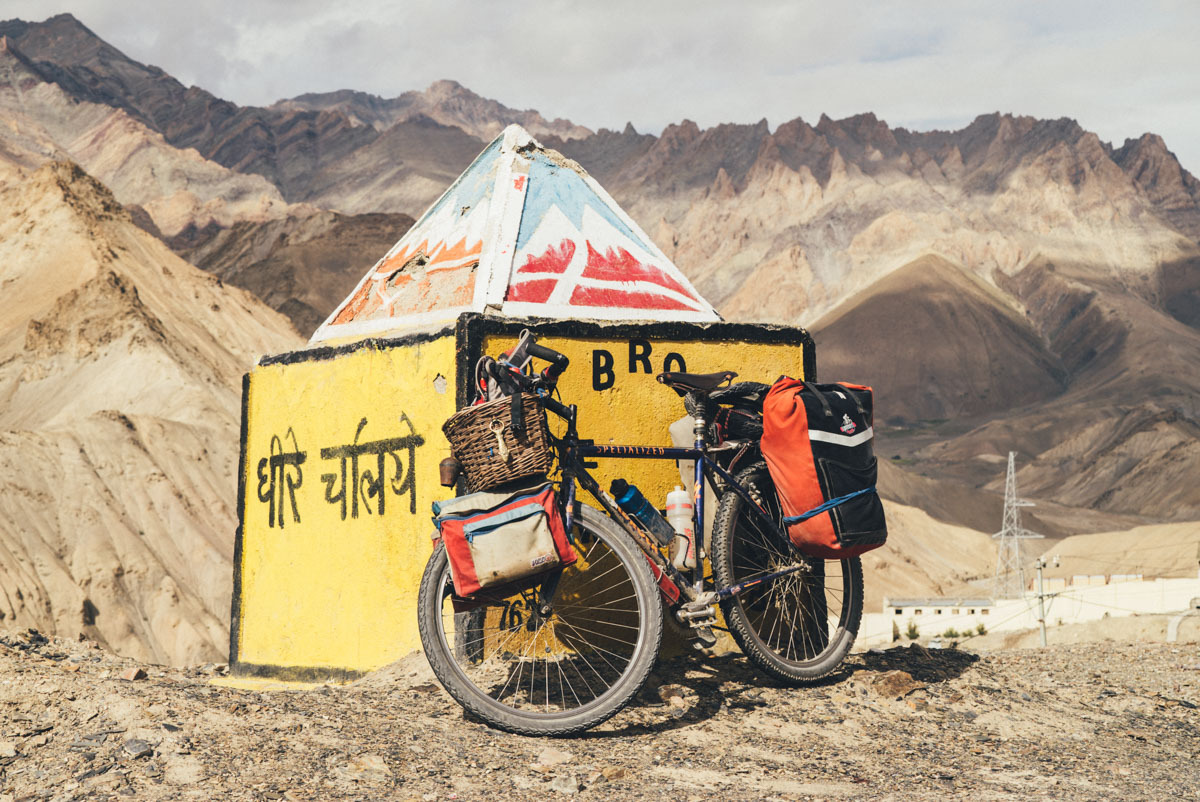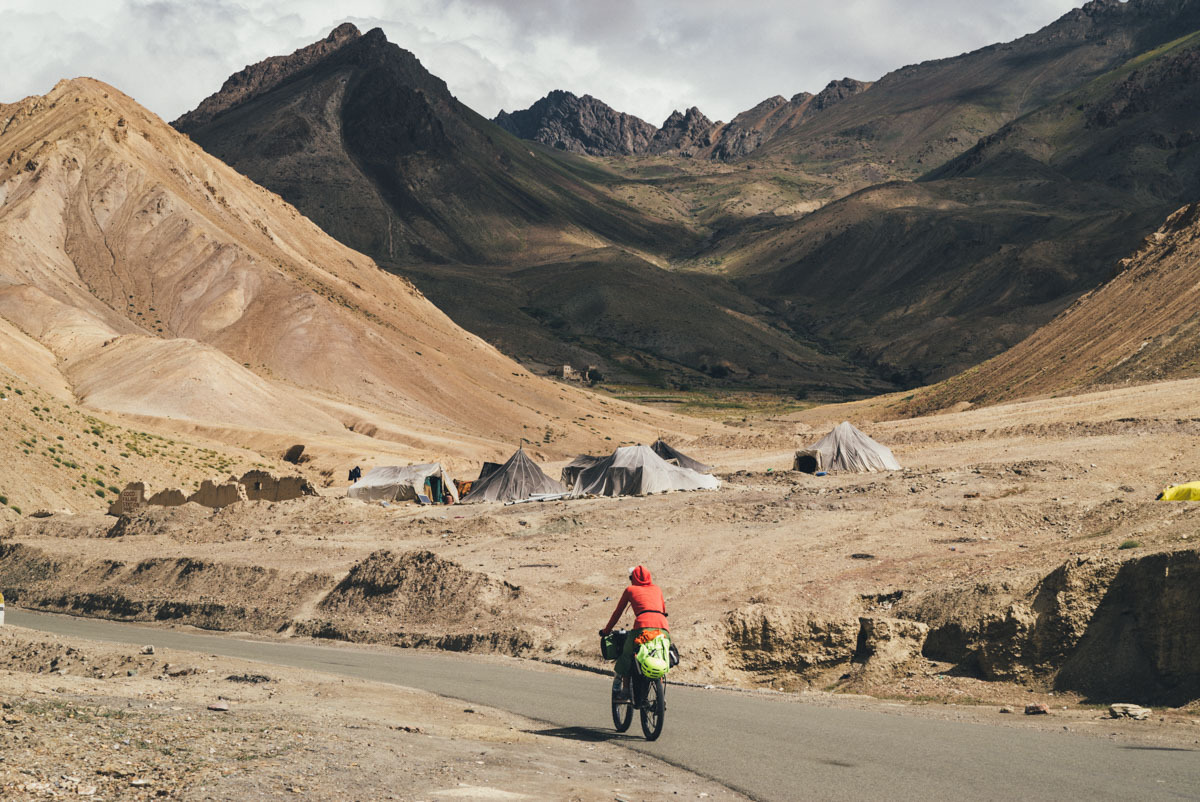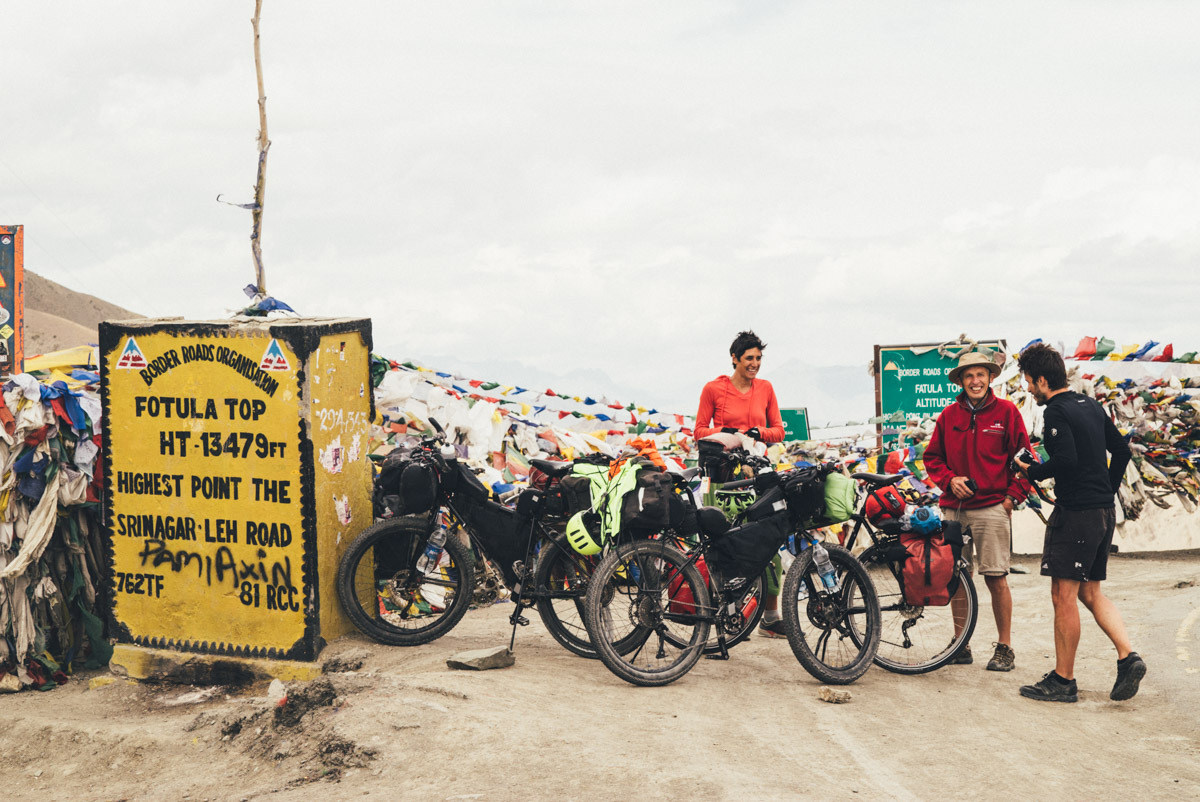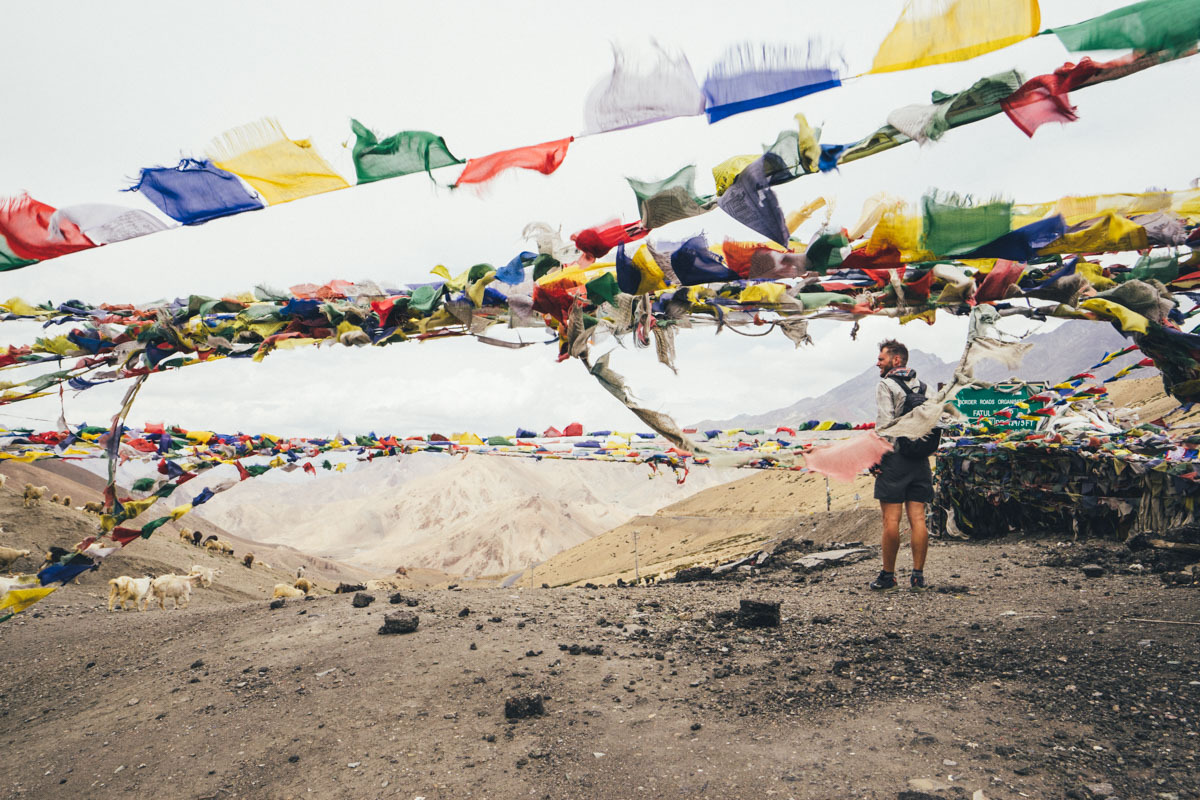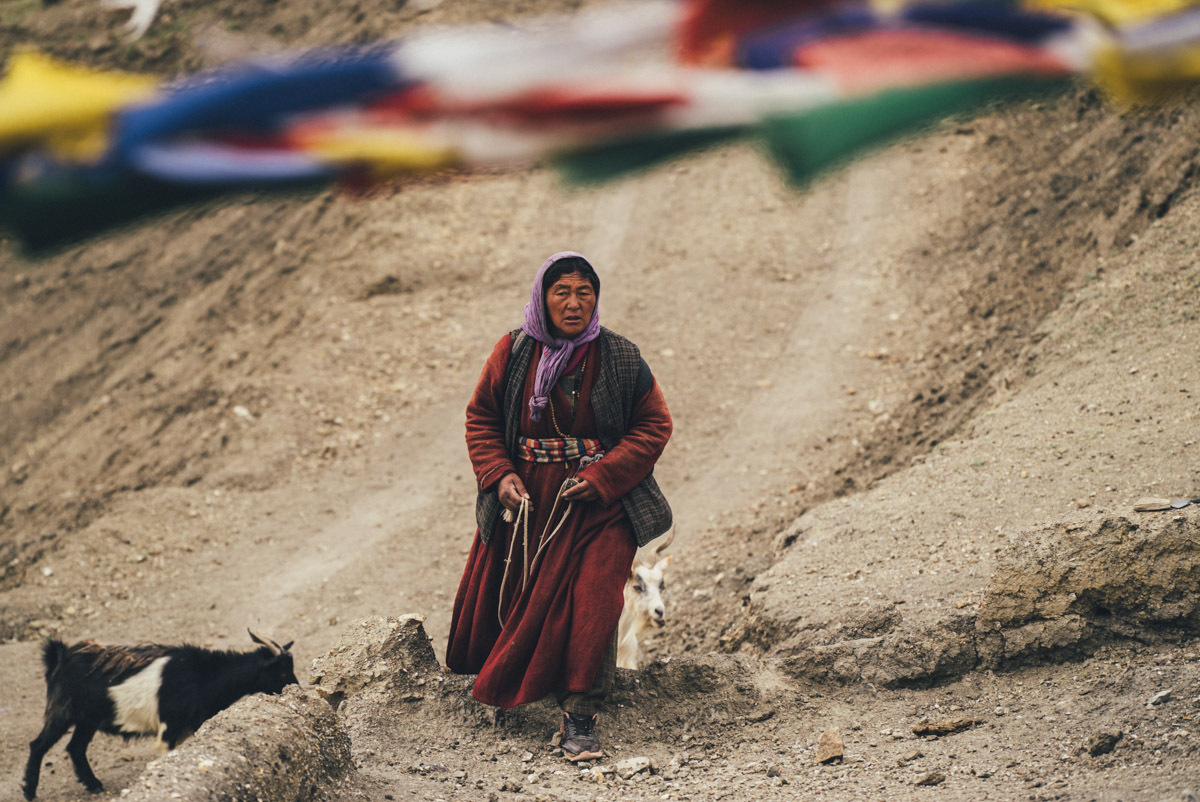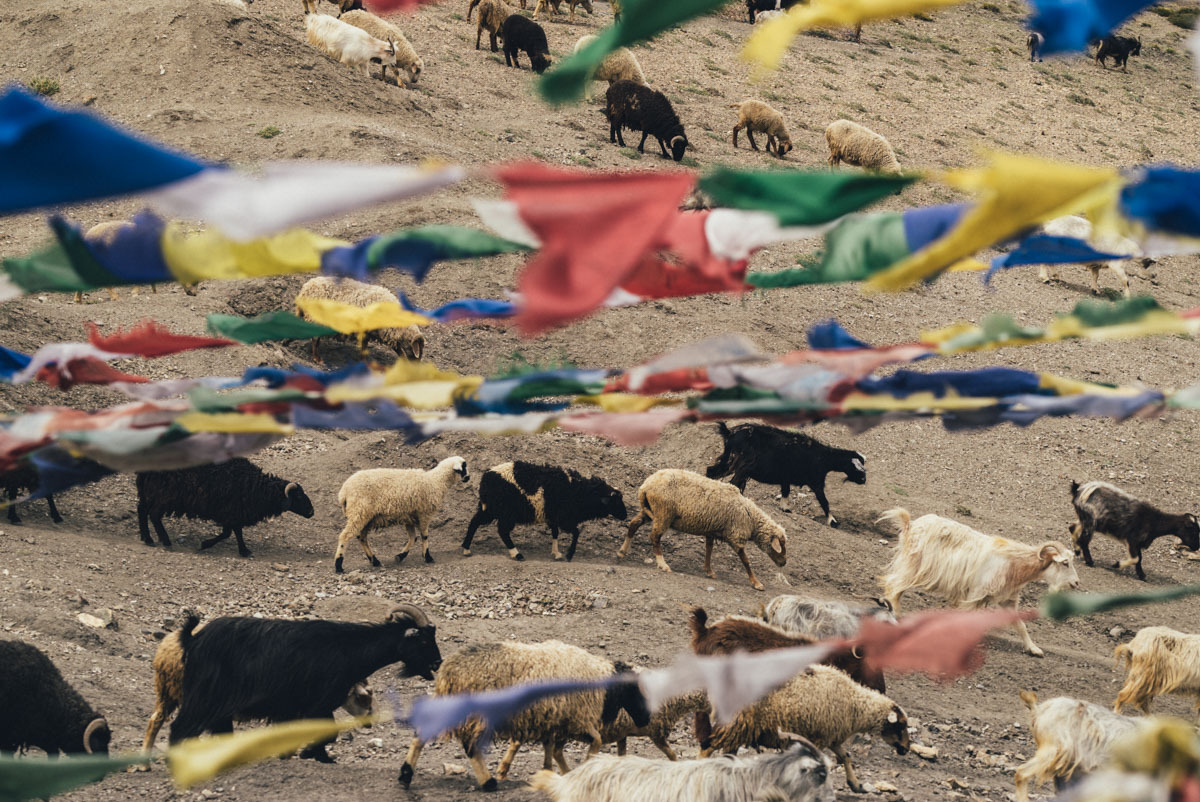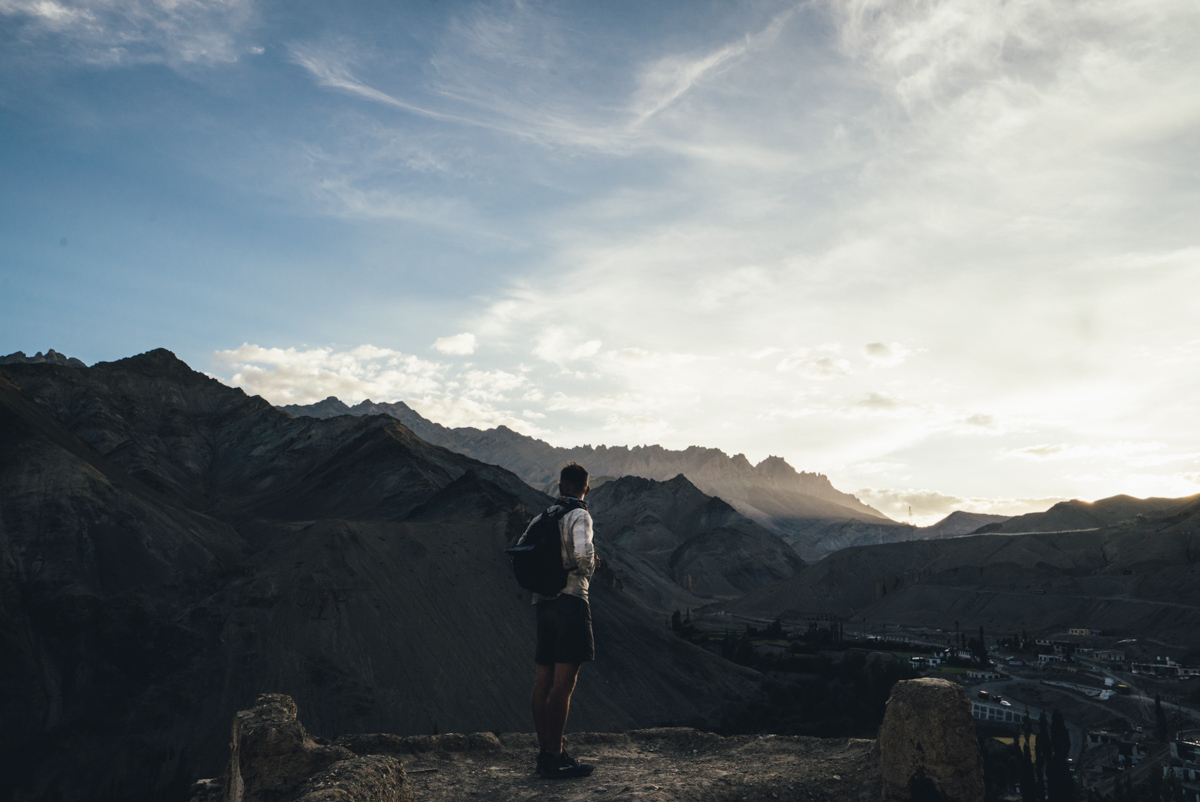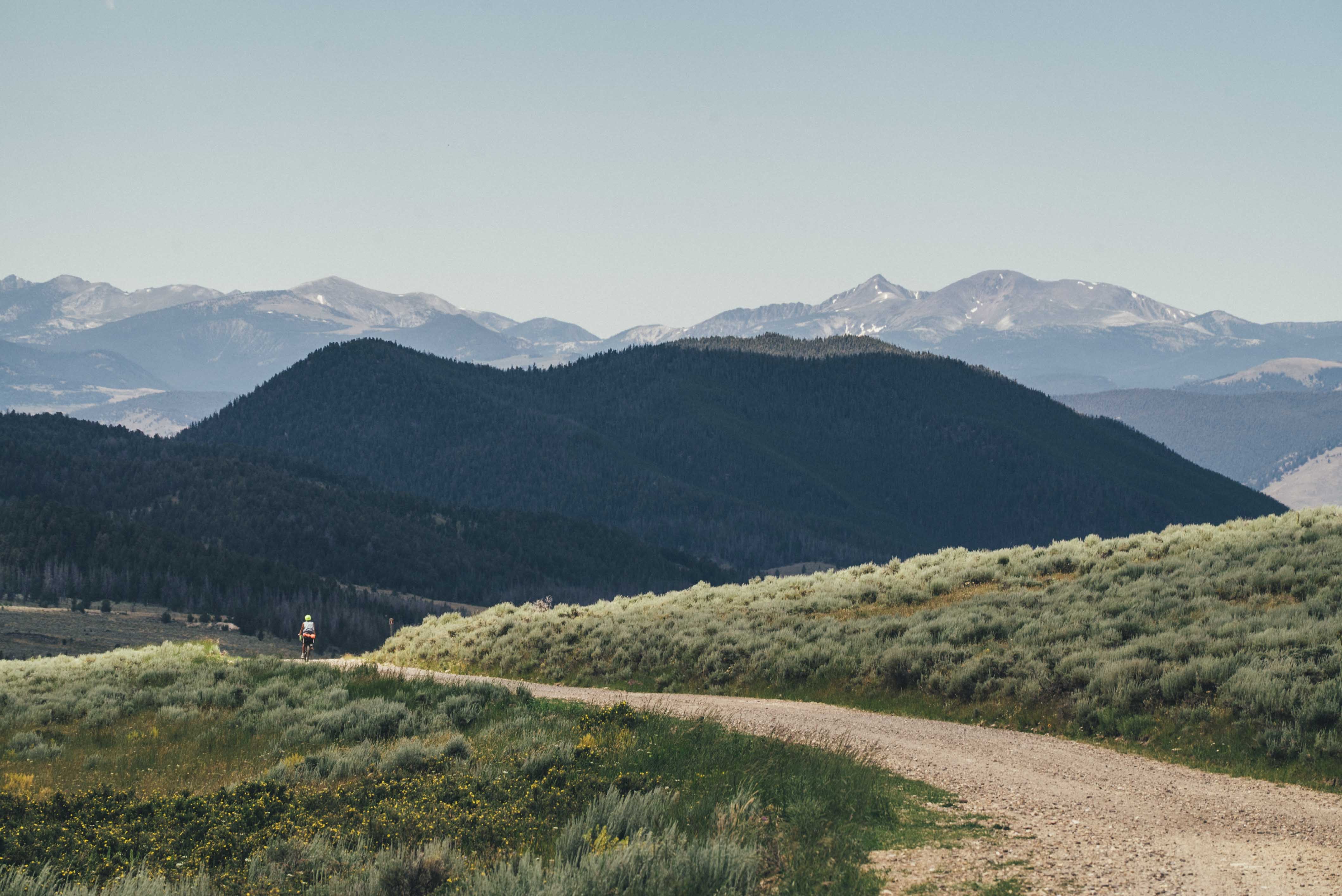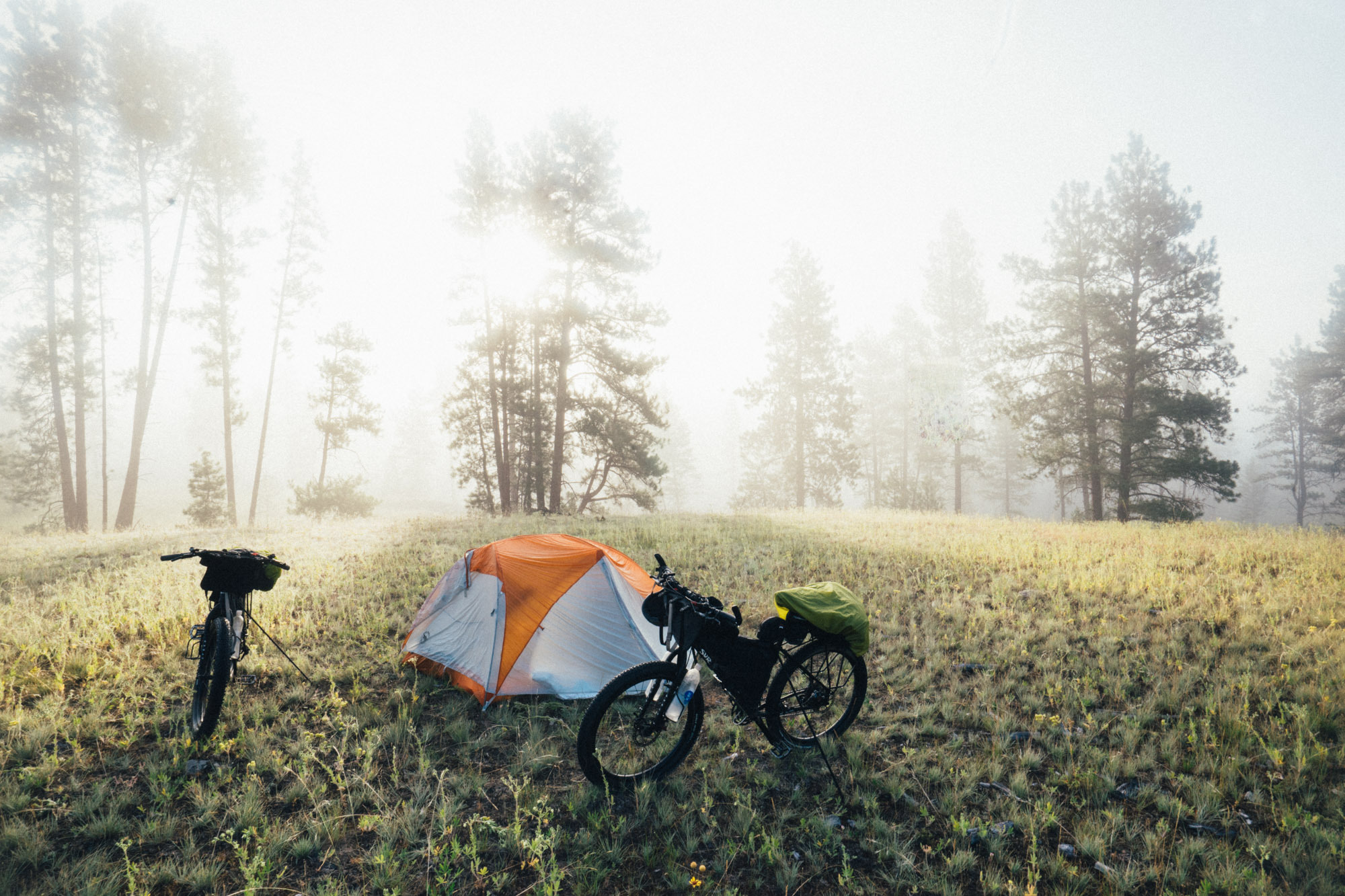After traveling for a grueling 46 hours, we touched down in Leh’s tiny airport. Due to our bike boxes being so large we had to take two cabs, the drivers threw our boxed bikes onto the roof and assured us rope was not necessary…
We settled into an oasis, the Ruthpa Guest House, where we reassembled our bikes on their beautiful patio while sipping fresh mint tea picked straight from their lush garden and gazed at the monstrous rock faces surrounding us, hardly believing our delirious sleep deprived eyes.
Leh sits in a valley at over 11,500 ft. We needed a few days to acclimatize before doing any major cycling. There are many new whitewashed guest homes with tidy gardens and a colorful city center full of rainbows of pashminas. A maze of small alleyways winds you through the market, where you can find whatever you need from bread to meat, but it is eye opening, or closing, to see the conditions the goods are prepared in: the dirt floors, questionable drinking water that runs through the town in an open ditch, and roaming scrappy stray dogs laying in every nook. Standard Ladakh homes are made from mud bricks with wooden windowsills and doors. Nothing goes to waste, cow dung is dried and used as fuel. The more fortunate have their own gardens to eat from and some even have solar to heat their water. Life is beautifully simple here.
Perched on a cliff is the famous Leh Palace, built in the 17th century overlooking Leh. We gathered up a few necessities at the general stores, tested Indian pizza, and acquired our inner line permits that allow us to follow the Indus River close to the Pakistan border. Due to these permits, this valley is rarely visited- villages like Dah remain unchanged for decades.
Our third and final day of acclimation, our host suggested we go to Choglamsar to try and catch the Dalai Lama who was suppose to have been speaking a few hours earlier. It seemed unlikely we would make it in time, but we immediately hopped on our bikes for the first time and sped down to the neighboring town dodging cows, speeding erratic cars and tata trucks. Thank goodness time is irrelevant in India, the Dalai Lama was still speaking when we located him at a children’s school and joined a few hundred people in sitting on the dirt field to listen. He wasn’t speaking in English, but we felt honored to be in his presence.
See Dalai Lama- check!
As we peddled out of Leh nothing could have prepared us for the staggering beauty of the landscape swallowing us. We cycled with our heads spinning around like owls, and couldn’t help stopping every ten minutes for photos. A tapestry of multicolored mountains in every direction. The main road to Kargil is filled with rushing military convoys, ornate dragon head Tata trucks, and packs of motorcyclists. Many of the cars and motorbikes stretch their arms out giving us the thumbs up out of respect for the effort it takes to cycle at this elevation. Our large tires and bike packing set up attracts a lot of attention, people will pull us over on the roads to take photos on our bikes.
In the Leh airport we spotted another cyclist, Andrea, a Swiss man who subsists solely off of Swiss chocolate. This was Andrea's second time to tour in India but first in the Himalayas. We all decided he would join us until Kargil, a four day ride west of Leh.
After the first climb of the day we were rewarded with a descent into an emerald valley to the town of Nimmu for veg noodles and tea. As we pass through villages people smile and wave, exclaiming “Jullay!” and I can’t think of one place in the United States where people would go out of their way to give such an enthusiastic “Hello!” to passing strangers.
We are a bit of an oddity in the smaller villages that see very few foreigners, much less cycling foreigners. Everyone is generous and kind. The minute you yell “Jullay!” huge smiles spread across their faces as they respond back! Children rush into the streets to give you high-fives, using their schoolbook English of:
“Hello”
“How are you”
“Where are you going?”
Their spatial recognition is usually poor and we're forced to put on the brakes to keep from running them over.
“Jullay” means: hello, good-bye, you're welcome, and thank you- which works well for us, as we can only seem to manage to keep the one Ladakhi word in our brains.
The second climb was harder as we dragged ourselves into Saspol to find a guesthouse. Luckily prices have dropped since leaving Leh, rooms range around 600 rupees ($9) and meals around 100 rupees($1.50), but this also means less westernized- hot water would soon become a distant dream.
In Khaltsi we presented our inner line permits to the border police to take the alternative route to Kargil. The officer shakes his head and tells us the road had been washed out by a flood and we should continue on the highway. We had heard whisperings of this in Leh but had hoped it would be passible by bike. After we tried to glean more information from the officer he frustratedly told us to just go. Unsatisfied, We decided to ask someone else down the road, who more explicitly said a bridge had washed away. A river crossing was not desirable, and who knows how big the water crossing would actually be. He was able to call and confirm it would not be possible to cross by bike. Discouraged, we turned back and slumped into some shade to wait out the heat as we came to terms with having to take the highway to Kargil and miss the unique Dah village. The highway also includes Fotu La, a 13,500 ft. pass.
.
Out of the heat waves another cyclist appeared, we flagged him down to join us in the shade. Drew, a warm Englishman had already been cycling for 3.5 months from Myanmar. We had come across a few cyclists going the opposite direction, but Drew was the first going our way and he was on his way to Padum. We decided to join forces and our bike gang grew to four as we began the very steep climb up Fotu La. Drew essentially taught us how to properly climb these forever winding mountains with patience. “Drew Speed” = throw it into the lowest gear and don’t change, peddling at the same low gear helps you conserve energy in the flatter sections in preparation for the steeper grades. Then bomb down the decent, whipping around corners at a frightening speed.
Lamayuru sits half way up the climb to Fotu La. The Lamayuru Gompa is one of the oldest and largest in the region and was built by the famous builder-monk Rinchen Zangpo (958-1055 CE). We explored the monastery and watched the sunset over the lunar landscape.
Fotu La was our first big pass since arriving in Ladakh and we were not sure how our bodies would handle the climbs.The grade of the roads in the Indian Himalayas are extremely gradual and we were able to cycle up the pass without pushing. After the harsh ascents of the Great Divide, Fotu La was more forgiving than expected and has given us confidence for our biggest climb, Tanglang La, which will reach 17,500ft.
Feeling victorious on the top of Fotu La we descended in search of a big celebratory lunch. Unfortunately no restaurants were found in the following small villages below, but a grubby little general shop was willing to make us Maggi, Indian Ramen noodles, with fresh veggies and hard boiled eggs. We welcomed any food that wasn’t bread and peanut butter and talked with the shop owner.
Finishing Namik La, our second high pass on this route, we made the well deserved 10 mile descent into Mulbekh to Paradise, a nice guesthouse located right in front of their famous large Chamba Statue rock carving, the future Buddha, dating from the 8th century. We talked with the guest house owner about our route to Padum and how the growing strife in Srinagar was ruining his business this season. Later that night a group of Indian motorcyclists rolled in. They had come from Srinagar with only bad news to report of the whole situation, and had essentially been run out of town with stones.
Kargil marks the turning point from the NH1 to the Zanskar Valley; a fairly large industrial city with a loud bustling city center and is mostly Muslim. Coming from such small and rural towns, all the city noise, crowds and trash were a bit overwhelming. As the only foreigners in sight, we felt eyes constantly on us and decided against spending another day there, plus the wifi was shoddy. Andrea had other routes in mind for his short visit and would go his own way, we would continue as a threesome with Drew to Padum. This would also be our last large city to gathered supplies for the upcoming days heading to Padum, which would have two days of no accommodations or food. Olivia has begun hoarding rolls of TP like it’s the apocalypse and Eric has discovered a Snickers replacement, "Munch Nuts." Our route so far has always brought us to towns with guesthouses and food. It will be an exciting change to creep further and higher into the Himalayas and camp closer to the stars.
